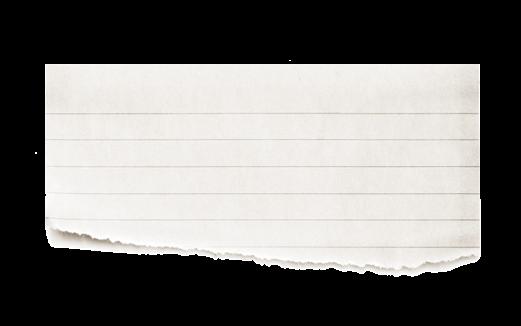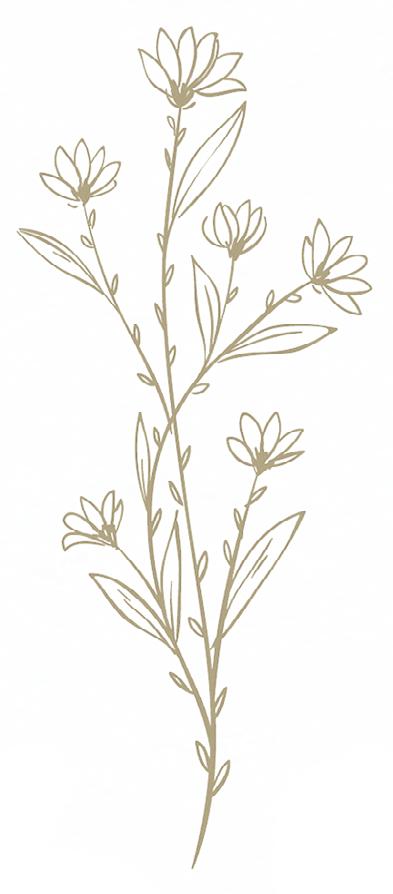Infinite Wild



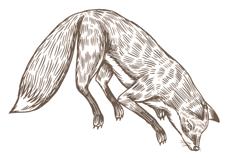












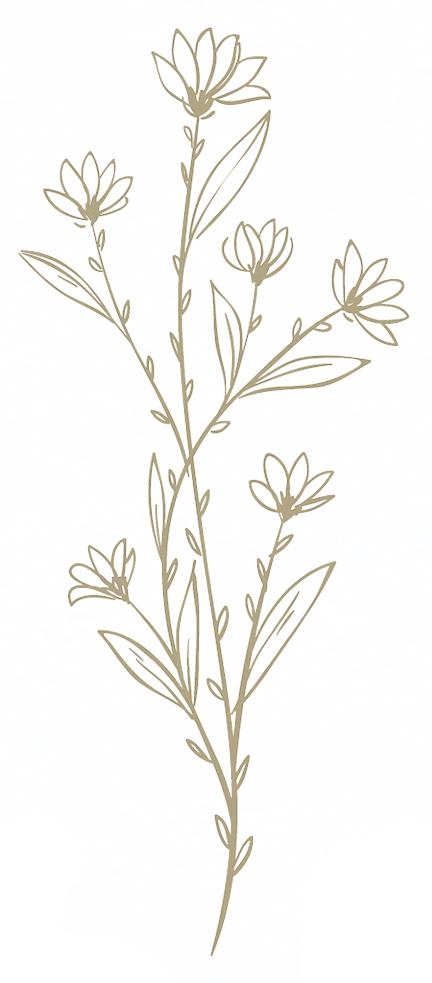 ” WILLIAM BLAKE
” WILLIAM BLAKE

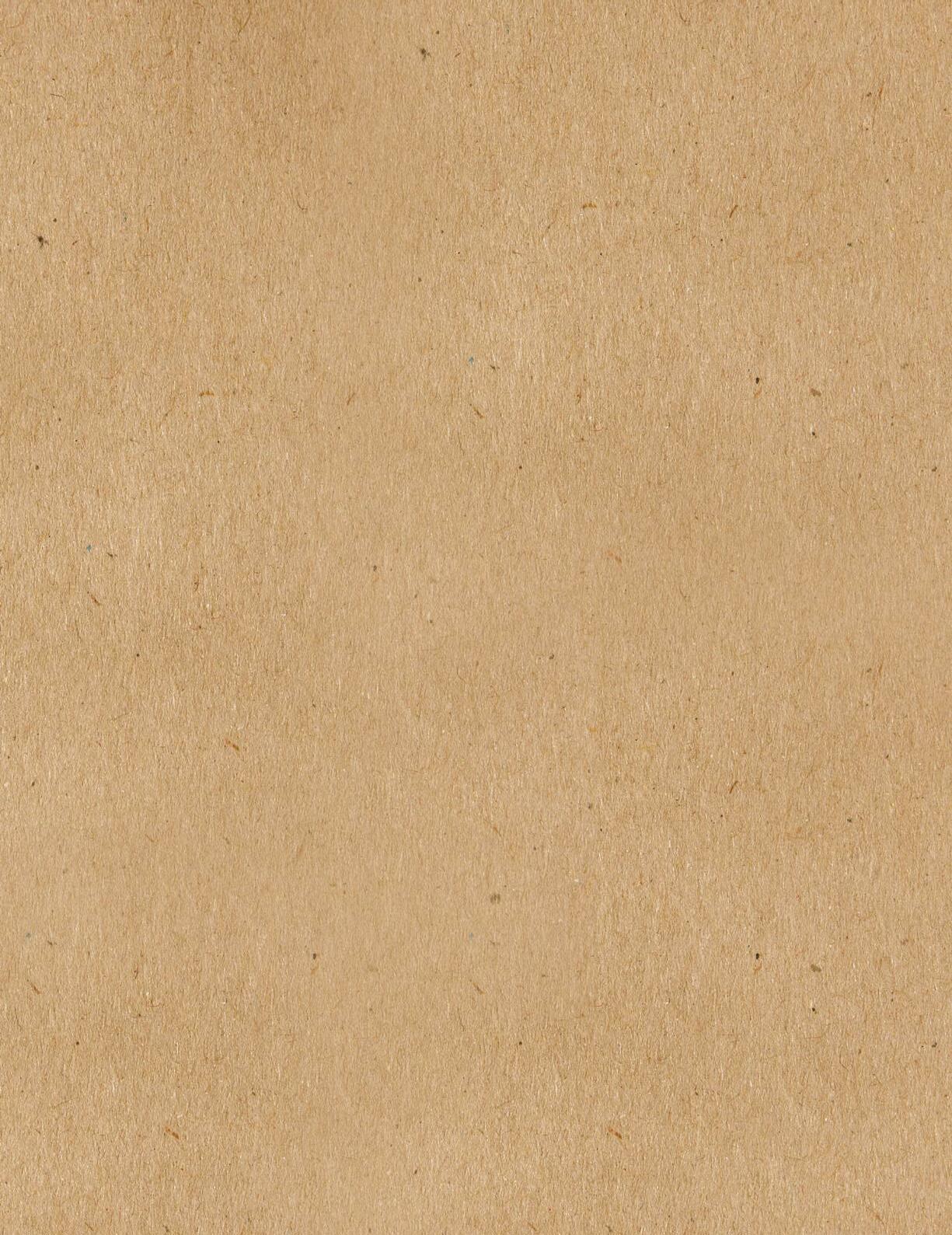




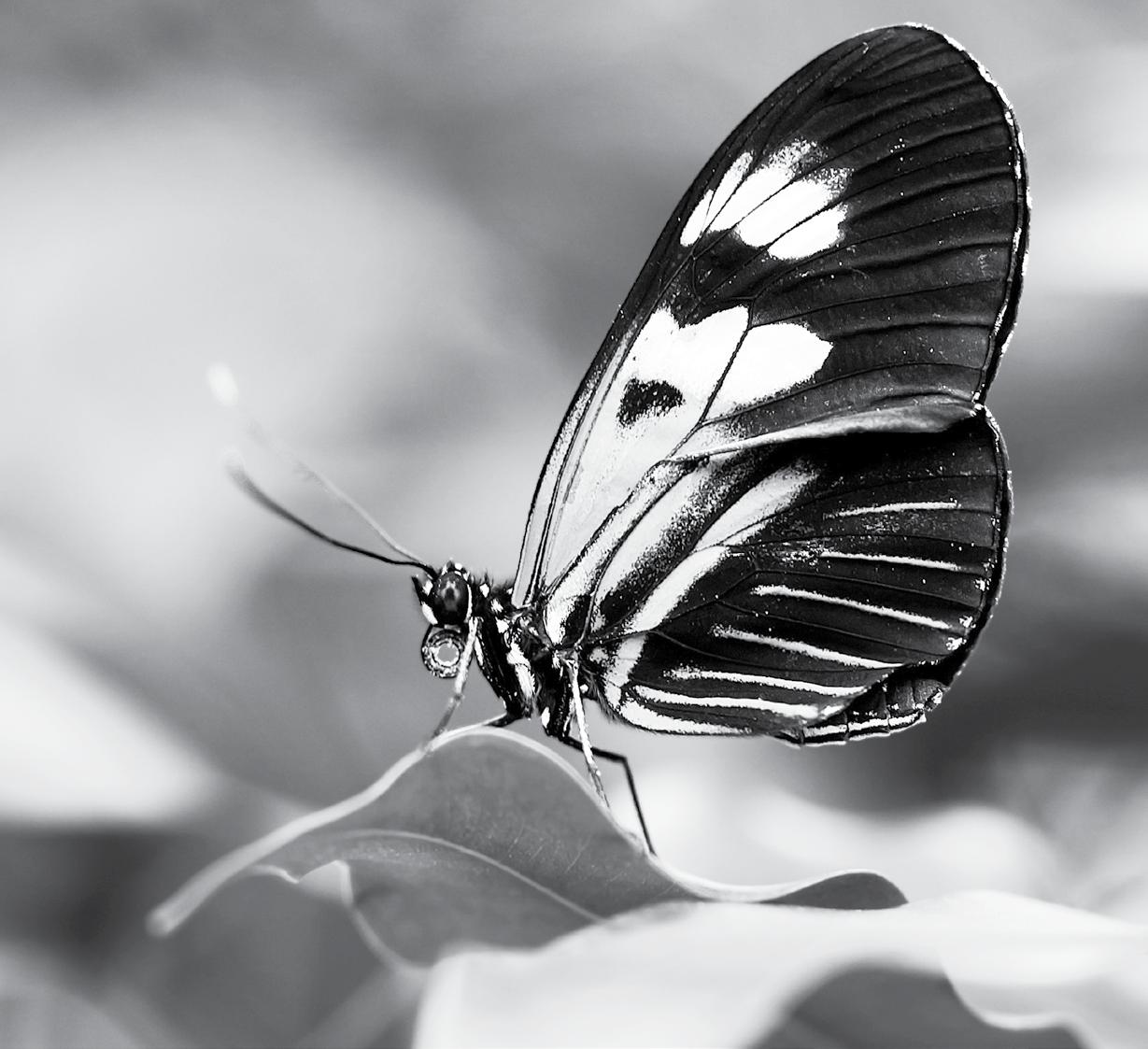

The expression “playing with a full deck of cards” is an immediate, simple, yet profound metaphor. Our annual report this year invites you to explore the implications of this statement. Welcome to WILD’s full deck - an intact biosphere and all associated ecological services represented in a deck of cards.
First, it’s imperative to understand that few things are more futile than playing a fair game of cards with an incomplete deck. The missing cards may go unnoticed for a time, but once discovered they often result in an immediate sense that no future game is worthwhile — or even possible — until the deck is replaced or made whole.

Now, imagine that the web of life is a deck of cards, each card representing a species, a life-giving process, a nurturing landscape. People and our behaviors are included in this deck as we are as much a part of nature as everything else. The game played with this deck is called The Biosphere and every move in this game is dependent upon the presence of and interrelationships between the array of cards. In a complete deck, infinite possibilities abound thanks to the abundance of nature. But when cards are removed from the deck — a mangrove forest here, a peat bog there — we diminish the infinite and regenerative possibility of the wild. We simultaneously reduce our own likelihood of playing a winning hand.
Indeed, given the disappearance of enough cards, a winning game becomes completely impossible. This directly parallels how we diminish ourselves, our futures, and our imaginative potential when we diminish nature.
Interestingly, while we all may have a favorite card in the deck, no card can win a game on its own. Just as it takes several cards to create a high-value hand in a standard deck, it takes a variety of ecosystems to create a successful biosphere. A tiger or butterfly or sequoia are beautiful on their own, but just like a lonesome two of spades or queen of hearts, they become unmoored from any greater significance. A species springs from a wild place, which offers a multitude of vital processes known as ecosystem services that support the entire web of life. These services ultimately give rise to human community, culture, and the infinite possibilities of the human imagination.
Species, wildness, ecosystem services, and human community — I like to think of this complete picture as an ecological royal flush.
As I was planning this year’s annual letter, my initial thought was to write about the importance of unity with nature and each other, as WILD is often described as a unifying force behind ambitious initiatives in nature conservation. But as I began to write those words to you, I realized they were founded in an underlying falsehood. We can only unite what is already divided; but, nature, including people, and its life-giving forces are indivisible.

Once we understand our irrevocable connectedness to the biosphere, we face the main question: do we live as a force for the wholeness of nature and people, or do we continue to operate under the illusion that we are divorced from the very context that nourishes and empowers us to be who we are?
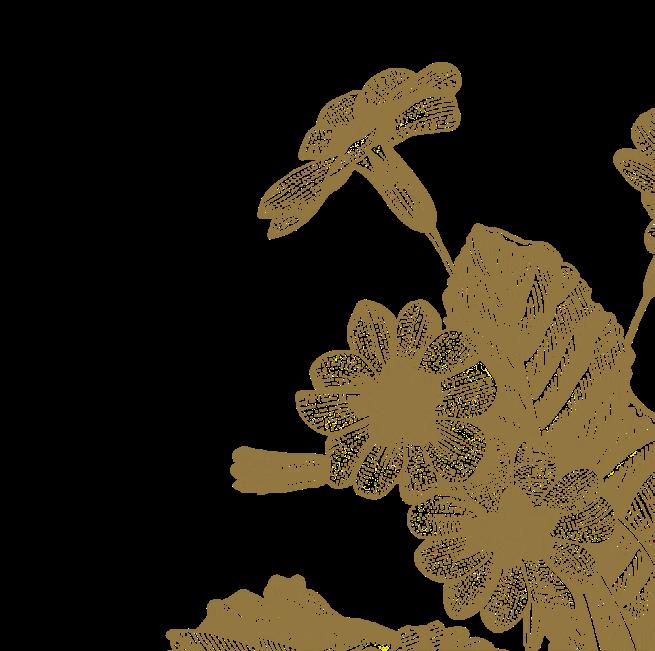
None of us, not a single one, has ever been separate from nature or the greater human community that springs from our wild planet. Like the tiger and the butterfly and the sequoia, we are all inextricably woven into the web of life. Whatever separation we think we might achieve from nature and from each other is as illusory as it is temporary. Because the Biosphere cannot be won with a single card, the future in which we want to live requires a full deck. And the more we come to terms with our place within the whole, the sooner we and our planet will find the healing we so desperately seek.
For this reason, I would describe the WILD card — our work — not as uniting people and nature, because we cannot unite what has never been divided. WILD is a healing force for people and nature. Sometimes the medicine doesn’t taste very good and requires us to step outside of our comfort zones, but the sooner we do, the sooner we can open our eyes to the truth with which we were born and is our DNA — the truth of the infinite wild.
Yours in the infinite wild, Vance G. Martin President WILD Foundation



"We can only unite what is already divided; but, nature, including people, and its life-giving forces are indivisible."

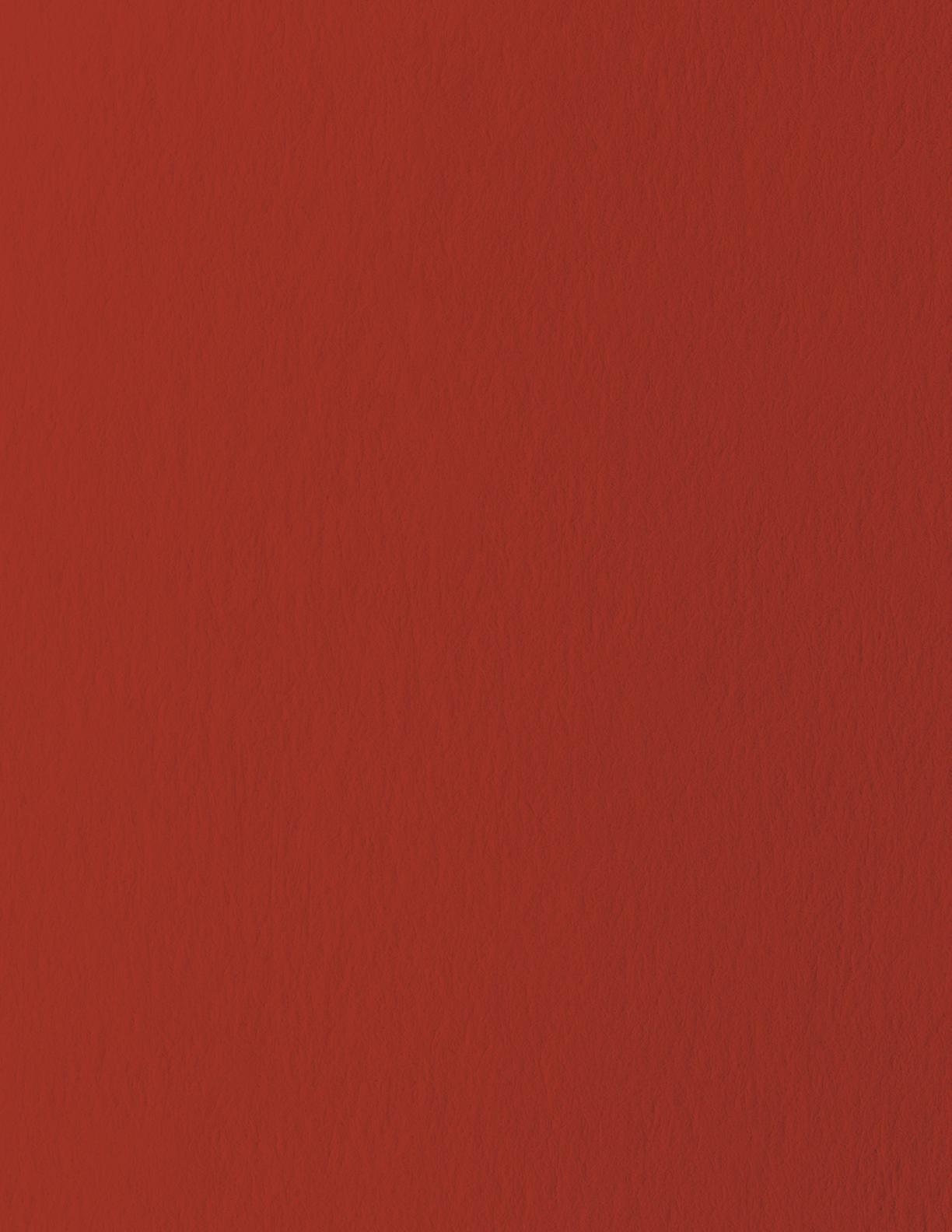
To accomplish this, we pursue two different types of outcomes: those that answer direct need and those that improve the possibility for more ambitious change now and in the future.

Impact that improves possibilities is critical at this moment in our relationship with nature, and we believe it is the key to conservation’s success. Responding to direct need alone can lead to reactive approaches that ignore wider, systemic challenges. When we work to address root causes, putting in place structures that empower more ambitious action on a planetary-scale, we put in place the conditions necessary to change the trajectory of history.

WILD’s mission is to create and strengthen leadership, communities, and coalitions for the protection and stewardship of Earth’s wild nature, because we believe that collective action is the source of enduring, sustainable change.
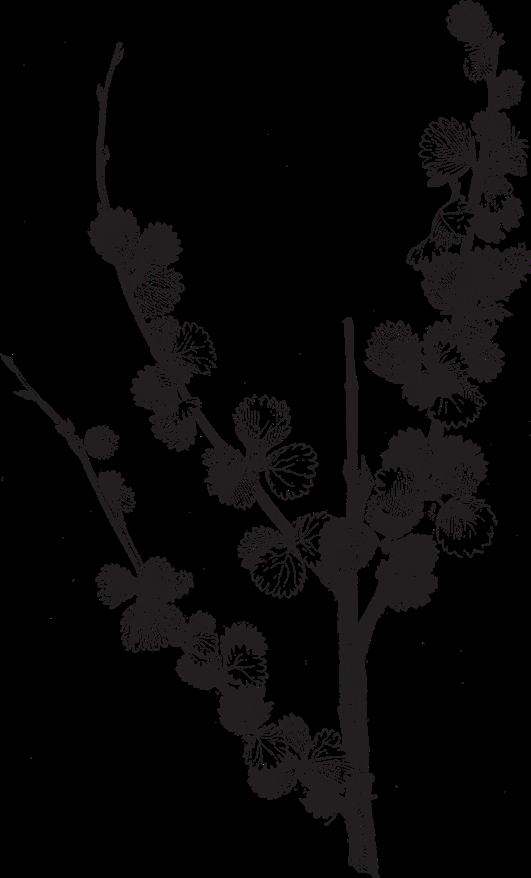

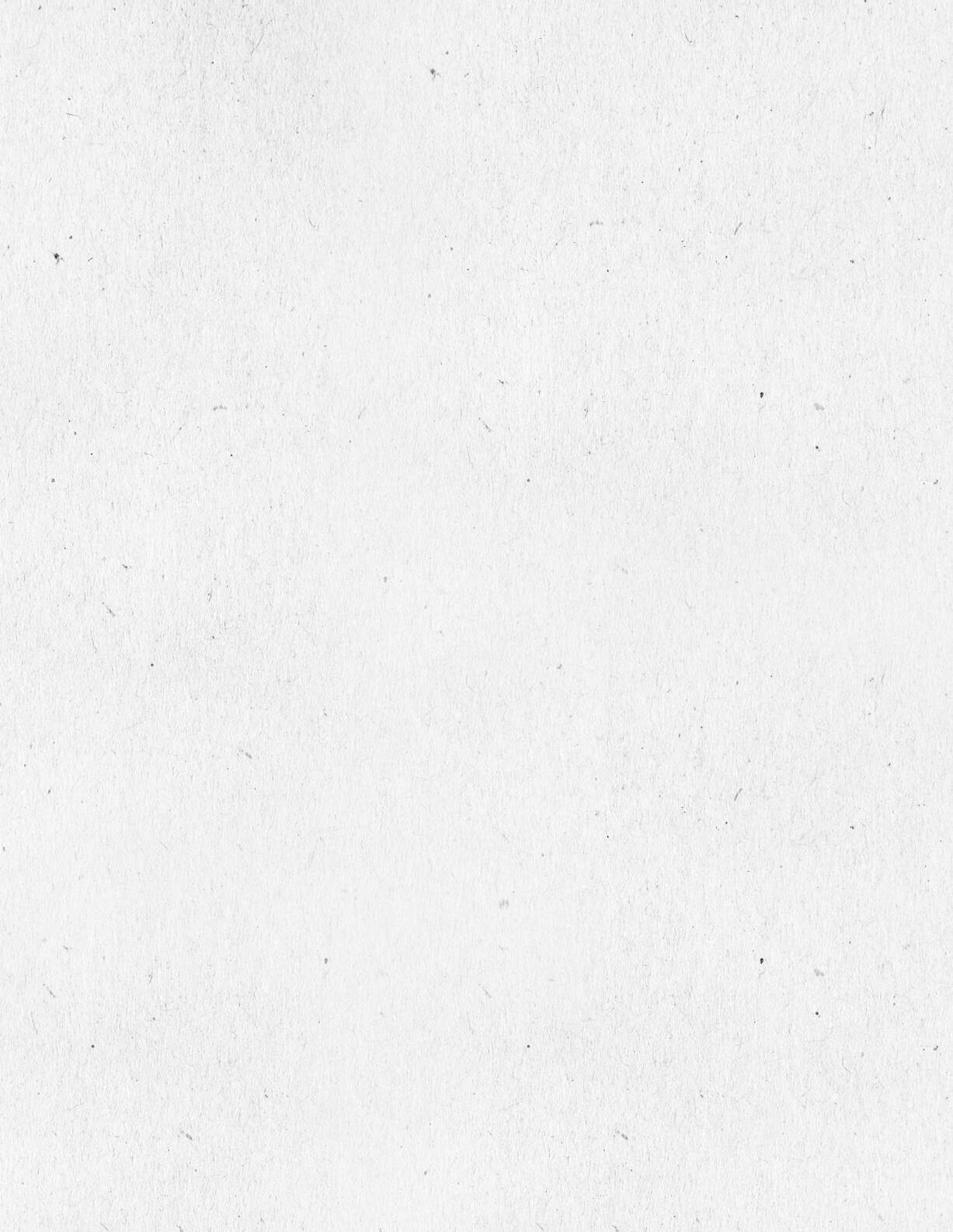
In the remote, Western Amazon, a community of people are working to recover their traditional lifeways and improve their opportunities while defending their customary lands from outside encroachment. They are the Yawanawá People led by Chief Tashka. WILD and our partner Earth Today are helping the Yawanawá to protect their territory and achieve greater sovereignty so that they can continue to defend the rainforest.
1,300
+ WILD +
Today combining efforts to:
tons of carbon is stored here
the equivalent of the annual auto emissions from
The Yawanawá People have defended the rainforest for centuries, practicing ‘culture is conservation’.
The Yawanawá are actively and strategically recovering their culture after over a century of abuse and enslavement on rubber plantations.

A mothership and seven patrol canoes
This year, WILD helped the Yawanawá build and launch a main ship to cruise the river and service their villages, and seven smaller canoes for constant patrolling, giving them greater oversight over their traditional lands.

For well over a decade, WILD and our partners, the International Conservation Fund of Canada, the government of Mali, and the dozens of communities of central Mali’s Gourma region, have helped protect North Africa’s last remaining herd of elephants. This is the Mali Elephant Project. The challenges are numerous, ranging between a rapidly changing climate to violent insurgencies. Through the determined efforts of thousands of brave and generous individuals, the elephants remain, and the people of the Gourma thrive.
Dozens of West African communities + WILD + International Conservation Fund of Canada combining efforts to:

home to 400,000 people of multiple ethnicities 300
home to 300 rare, desert-adapted elephants, the last of their kind in the region.

The Gourma communities are not the beneficiaries of the work, they are the owners of it — because WILD helps empower decentralized decisions-making to local communities.
An international community of scientists and researchers listening to the needs and voices of local people and creating a global alliance with world-changing results.
One of the largest terrestrial protected areas in the world, including hundreds of thousands of people living within it, helps people and elephants live in harmony with nature.

Conservation leadership comes in many forms, including young professionals taking the initiative in their communities to protect and restore nature. These young leaders often work in isolated settings without access to many of the resources they need to sustain their work. CoalitionWILD is providing mentorships, training, and support to dozens of young leaders around the world working on the frontlines of some of conservations most challenging problems.
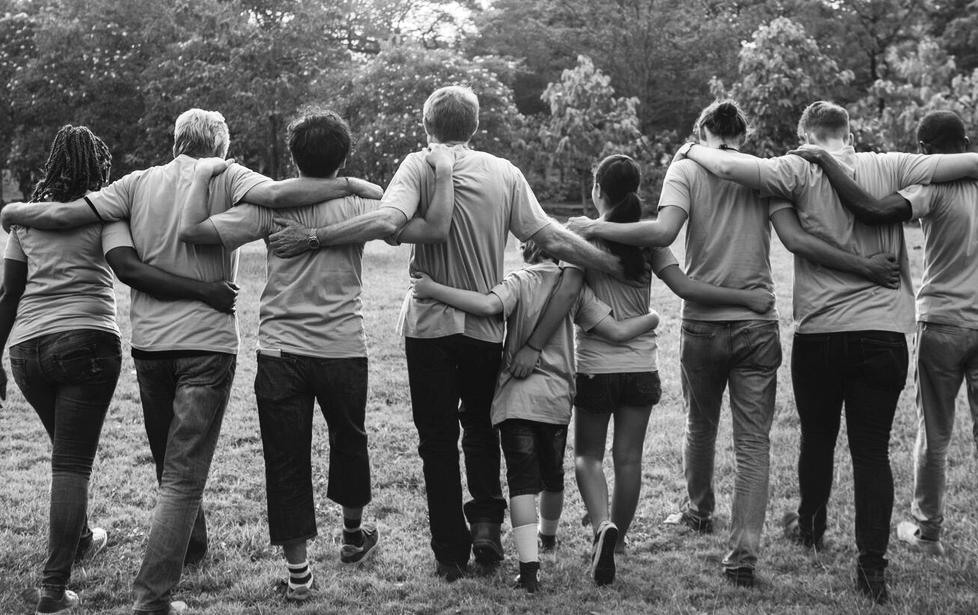
Dozens of young conservation leaders + WILD + professional mentors combining efforts to:

65 (35 EXCELerator, 30 Mentorship Program) young changemakers who participated in CoalitionWild programs this year in 41 countries. All were 35 years of age or younger.
270 stakeholders engaged in training, workshops, and other environmental-related events.
12,000 kgs/26,455 lbs of plastic bottles collected 2,500 households participated in discussions related to battling illegal hunting
18 environmental presentations and workshops conducted
By pairing our young professionals with experienced conservation practitioners, scientists, and fieldworkers, we accelerate the transfer of knowledge from one generation to the next.
The next generation faces novel challenges. Continuous learning support is necessary for these leaders to adapt. CoalitionWILD’s peer learning network is a powerful problem-solving tool.
We imbue CoalitionWILD members with confidence and increased competence through frequent trainings tailored to meet the specific needs of individuals.
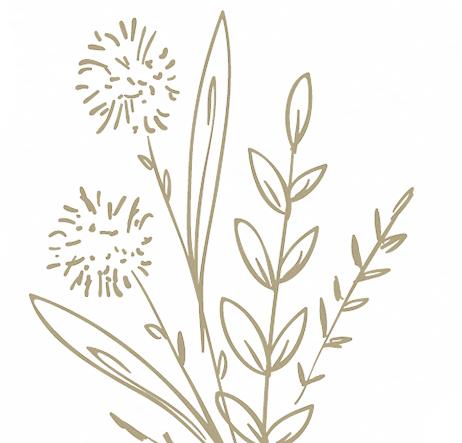
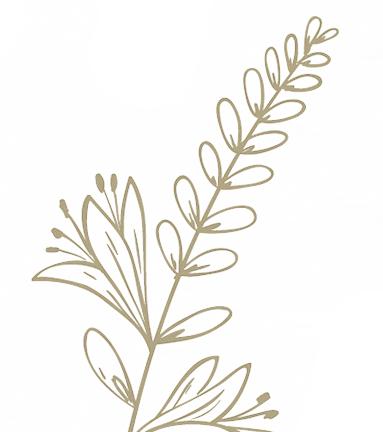


The scientific consensus is that protecting Half of Earth’s lands and seas is just as necessary for halting the twin existential threats of climate change and mass extinction as reducing carbon emissions to zero. In order to succeed, we must first inform the world of the necessity for HALF, then urge them to place the protection of nature at the top of the agenda.
The Vatican calls for the protection of Half by 2030 while simultaneously ensuring the full rights of Indigenous Peoples to their lands.
+2,000 high level African policy makers, local activists, and researchers informed on the science of HALF.
“The tree which moves some to tears of joy is in the eyes of others only a green thing that stands in the way. Some see nature all ridicule and deformity . . . and some scarce see nature at all. But to the eyes of the man of imagination, nature is imagination itself.”
WILLIAM BLAKE
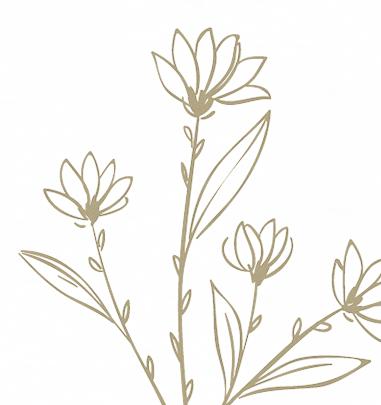

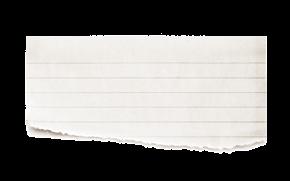

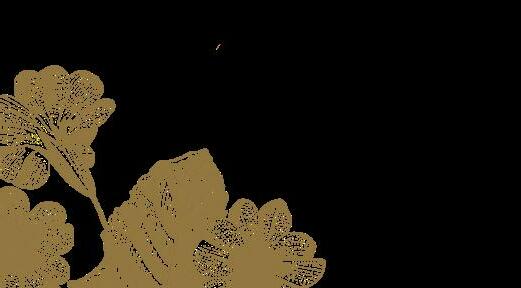
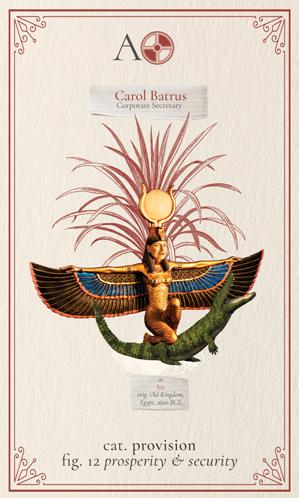

Vance G. Martin, President Amy Lewis, Vice President, Policy + Comms
Jennifer Meyer, Director of Operations Jackie Batrus, Content Manager



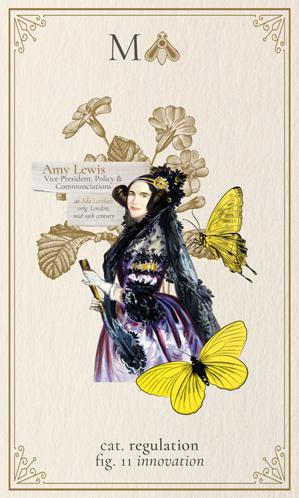
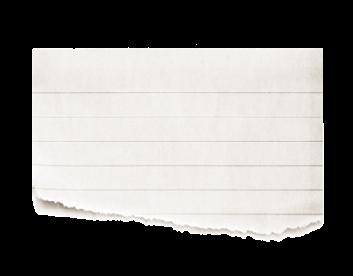
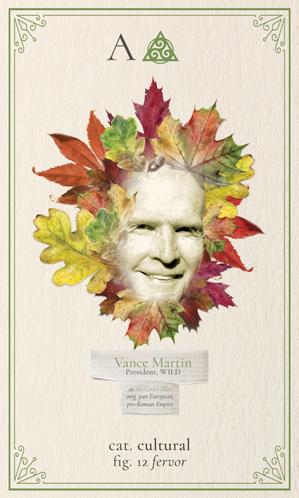
Guilia Gasparrini, Social Media Specialist


Karl Wagner + Magnus Sylvén, Co-Directors Global Rewilding Alliance
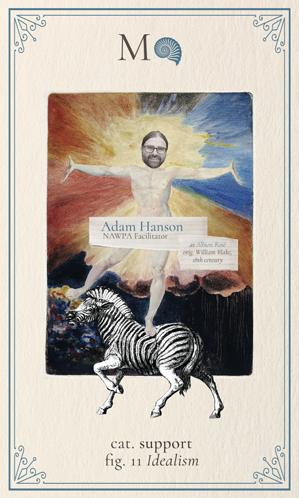

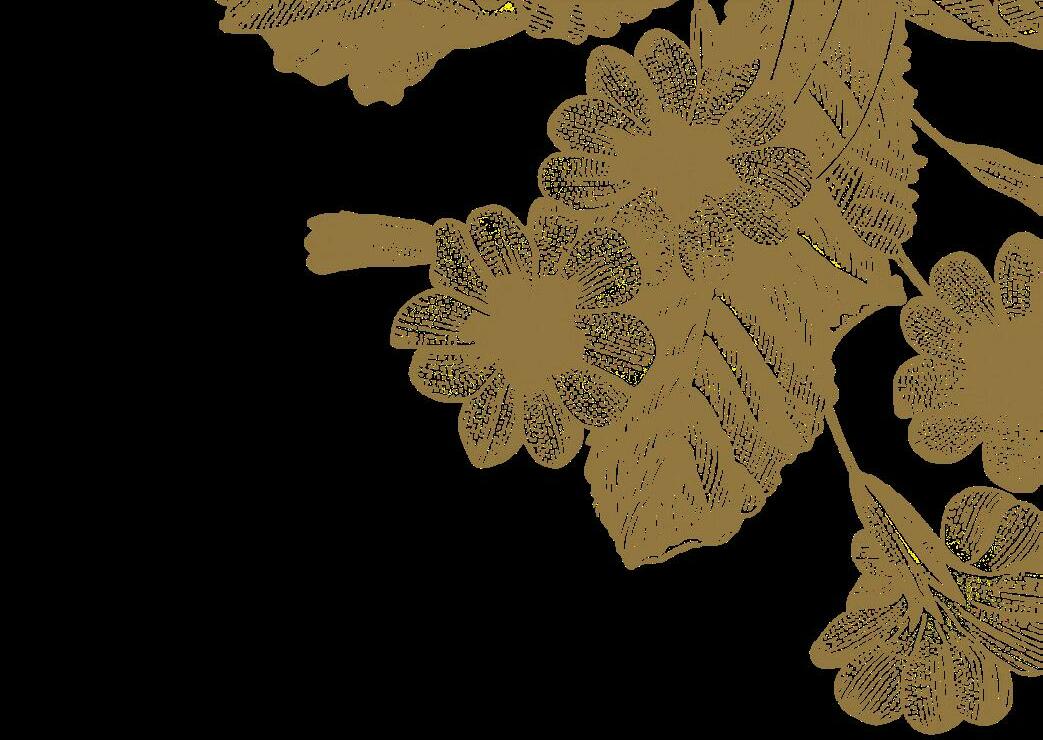
Susan Canney, Director, Mali Elephant Project
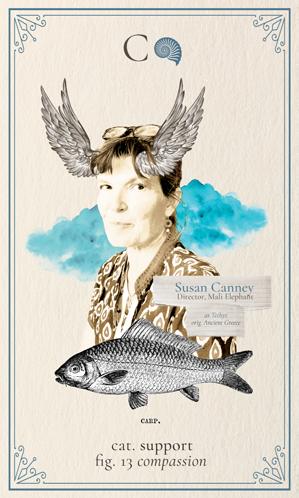
Adam Hanson, NAWPA Facilitator
Zhang Qian, China Representative Yen Parico, Director, CoalitionWILD

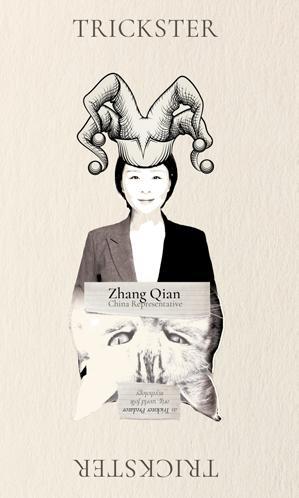

Joel Holtrop Charlotte Baron
Ed Sanders Vance Martin Clay Stranger Swati Hingorani Lindsay Ellis Jonathan Miller Lena Georgas Kat Haber Keith Sproule David Barron James Balog Julie Cajune Rob Harding Timothy Hass Morgan Heim Larry Kopald Michael McBride Ilarion Merculieff Cristina Mittermeier
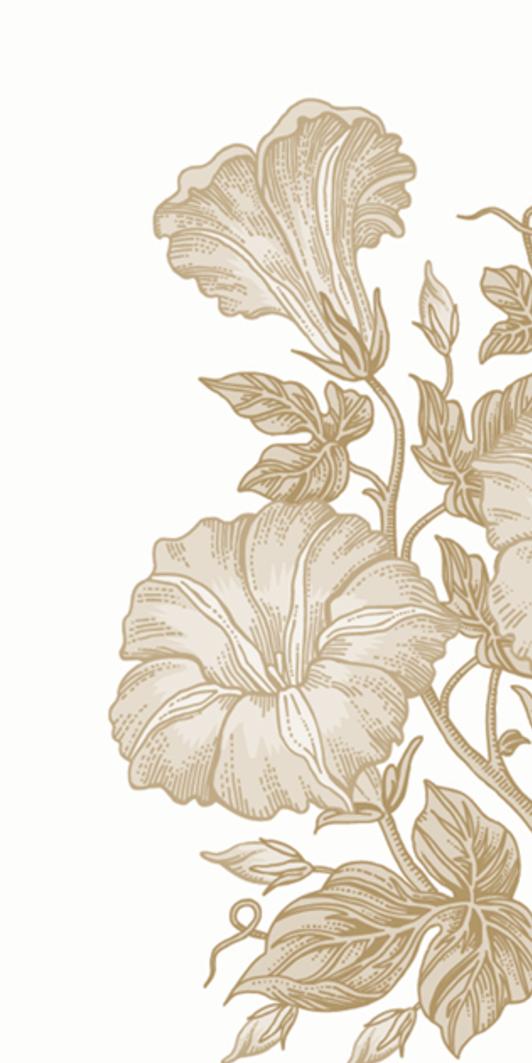

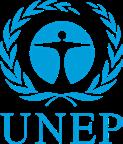





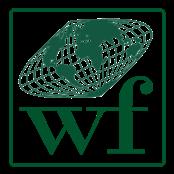


Thank you to our Key Partners that without them we could not have achieved the results we have had.

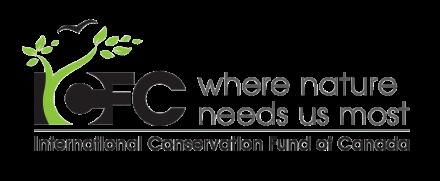
Ali Robertson
Alida Gorman
Alissa Rose
Allen Greenfield & Vivian Feintech
Amanda Kossow
Amelia Vannello
Amy Frisina
Amy Grose
Andrea Grant Andrew Towle
Andrew Warren Angela Butzen
Angela Garone
Angela Pauly
Angela Vanhegan
Angéline Aylward
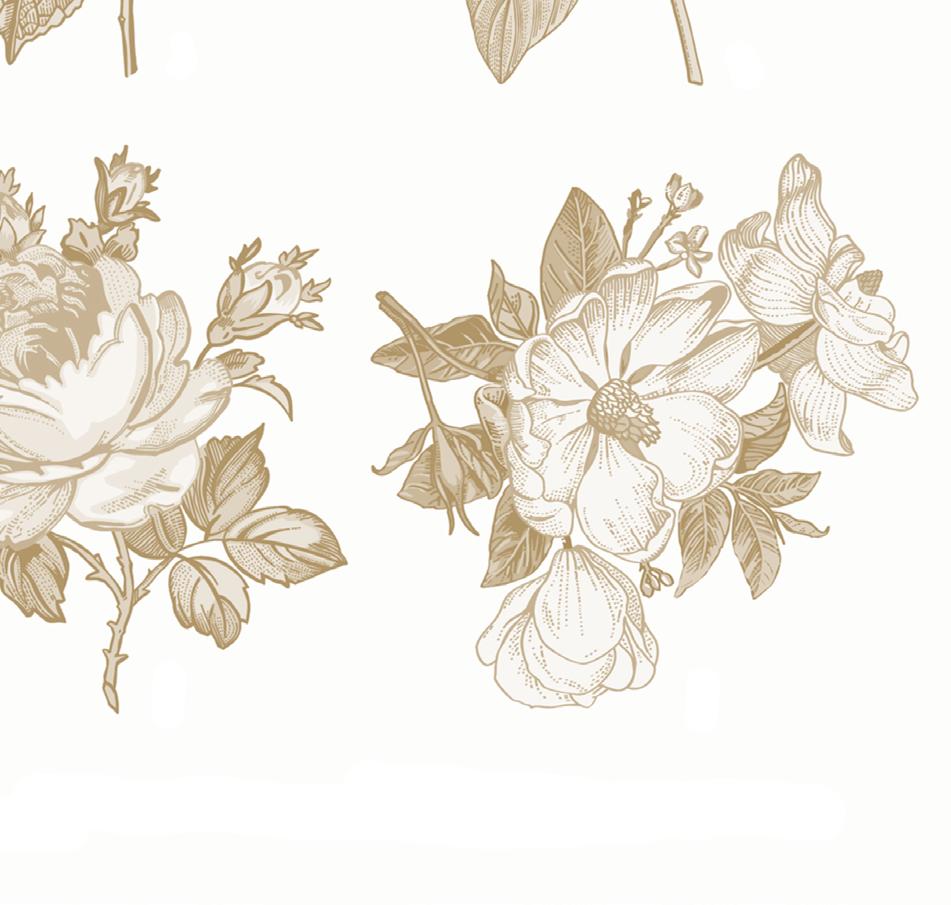
Angelo Cambie’ Anita Conner
Ann McAlpin
Ann Napolitano
Anna Lomonossoff
Annabel Ross
Barbara Taller
Barry Nesbitt
Bart Deschoolmeester
Ben Sorgiovanni Bo Gosmer
Brad McDonough
Branislav Vidovic
Brenda Frankart

Brett Williamson
Brian & Younghie Achenbach
Brian Hicks Brian Jones
Brianne Olin
Bruce Beaulieu
Bruce Rodney & Valarie Southgate
Candace Carter
Care About Something Carey & Perry Chenoweth
Carol Buchanan
Carol Napier Carol Shepard & Brian McAleer
Cheryl Szelag Alderese Child of Wild Chris & Wan-Mei Heinrich Chris Eykamp
Christian Wade Christie & Libby Benet Christina Howle Christine & Stefan Geissbuhler
Christine Hinds Christine Pryde Christine Thompson Christopher Barkley Christopher Peters Christopher Walker
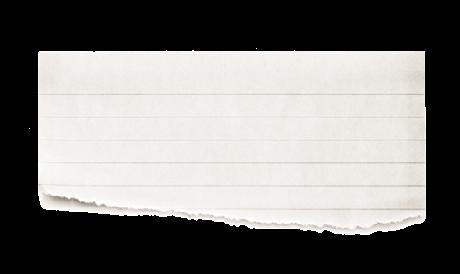
Christopher Warren Claire De Biasio Colleen Manquen
Constance Jacobs
Cordelia Stone Craig & Anita Woods Cristina Negrea
Cullen Duffy
Curtis Barnett
Cynthia Russell
Cyro Mandapat Datu
Dana Fields
Daniel Daugherty
Daniel Everson
Danny Swerdlow
Dave Jones
David Cohn
David Gerk
David Hamel
David Harder & Deborah Greenwald
David Lean
David Levy David Manski David McNamara
David Posner
David Suchy David Zamba
Deborah Attwood Deborah Stone
Debra Canole Deepa Prasad
Denise Calhoun Denise Featherstone
Diane & Eric Schott
Diane McIntire
Dianne Jacobsen
Donald Evey Donna Siemro
Dorothea Moore
Doug Schrock
Douglas Bender & Emma Trejo Douglas Lee Douglas Swaim
Doyle Buckley
Dr. Bobbi and Dr. Barry Coller
Dr. Jeno Staehelin Foundation
Dylan & Marina Cragg Earl Pearson

EarthHero, LLC
Ed & Peg Sanders
Eleonore Vos
Elgar Pichler
Elisabeth and Angus Marland
Elizabeth Davidson
Elizabeth Naughton
Elizabeth Steele
Elizabeth Ward Elizabeth Zumwalt
Ellis Foundation
Elna Tsao
Emily Weiss
Enlivened Collective
Envestnet Financial Technologi Inc.
Eric Garcetti
Erika Geary Erin Burin
Ethan Kimmel
Eugene & Georgia Fowler
Evan La Penna
Evil Queen LLC
Fadi Aqel
Fannymiami
Foxc
Frances Alayne Perrott
Francesco Maria Mantero
Francesco Pieraccini
Francisco Guemes
Fred Rubin
Frederick Reef Egger
Freya Secrest & Jeremy Berg
Gabriel Marks-Mulcahy
Gary Brazel
Gary Dean Gary Osheroff
Gary Williams
Geoff Tennent George & Nancy Wallace
George Ohrstrom, II & Manci Ohrstrom
Gigi Short Gina Cornick
Glenna Waterman Glob, LLC
Graham Marsh Greg DInunzi
Gregg Malley
Gregory & Nancy Ellermann Gregory Pierce
Hannah LaChance
Harmonia Holdings Group, LLC Harsha Gopal
Harvey B Maisel & Andrea Boyarsky-Maisel
Heather McCollough
Helen & Scott McCarty
Helen Donis-Keller
Henry Ganio Holly Cooper Howard Sarasohn
Hunter Ray
Hygeia Foundation for Health Science and the Environment, Inc.
Ian Whyte
Ilana Sophia Ilona Jappinen
Indus Lewis
Ineke Vollebregt
Innovative Openings, Inc Ionut Bujor Irina Nazarko
Iris Li
Jack Cooper Jack Daniel Jack Henry & Associates, Inc.
Jackie and Don While Jacob M. Rudisill
Jacob Quartuccio
Jacob Vizcarra
Jacqueline Russell Jacques Roberge & Jana Pika
Jake Alsobrook
James Bradshaw James Clark
James McMichael
James Orth
James Turner
Jan Lowe
Jane Alexander
Jane Huston
Jane Larsen
Janet Dyer
Janet Wilson
Jara Monroe
Jason Paterniti & Nicole Watson
JD & JB Dutton
Jean Larson
Jean Park
Jean Trowbridge
Jennifer & Hugh Grubb
Jennifer Napolitano
Jennifer Woods Tierney
Jenny Beale
Jeonghyun An Jeremy Cranford Jeremy Riehle
Jessica Bendiner
Jessica Flack Jewish Communal Fund Jill Giele Jill Yoshicedo
Jim Barborak
Jina Youn
Jiyeon Lee
Joel & Julie Holtrop
Joel Vander Linde Johanna Merkel
John & Jean Slieter
John & Mark Slater
John Arnold & Gayle Klauser
John Feeney
John Flock & Victoria Mills
Jonathan Miller
Jonathon Moore
Jordan Masanoff
Jose Brito
Joseph Grabowski
Joseph Robinson
Joseph Stein
Joshua Ross
Jospeh McFarland
Joyce Cragg JP McLaughlin
Judith Dirks Judith Doran Judith Mize Judith Schneider Judy Bruce Judy Egger Julie Kansteiner
Juliet Lamont & Phil Price
Justin Dernison
Justine Buckner
K.J. McCorry
Karen Guthrie Karen Kuenning
Karen Mulhausen
Karen Robinson
Kat Haber
Kate Moffatt
Kate Wheeler
Katherine Alexiev
Katherine Collis Katherine S. Heath Kathleen & Roger Roos Kathleen Brien
Kathleen Mittman Kathleen Ryan Kathleen Walsh
Kathryn E Stiver Kathryn Good-Schiff
Kathryn Medina Kathy Silbert Kelly Foulk
Kenji Lefevre Kenneth Del Sardo
Kerry Lightenburger
Kevin Hawkins Kevin Traegner
Kilian Walsh
Kindness Matters Foundation Kirsten Drummond Kirsten Tischer
Kristen & Paul Klawitter
Kristin Buckley
Kristin Casey-Cardano
Kristin Kozelsky Kueiyu Chen
Kurt Wendlenner
Lara Derasary
Lara Peterson
Larkin Stentz
Larry Atherton
Laura L Smith
Laura McCauley
Lauren Noel Lauri Hosio
Lawrence Thompson
Leela Chockalingam
Lena Georgas
Leslie & Geoff Oelsner
Leslie Clark
Leslie Matheson
Liandra Lloyd Linda & David Bachrach
Linda Del Rosario
Lisa Bates
Lisa Dupuree

Lisa Juris Logan Cunningham Louis Tichacek
Luana Rubin
Lucas Simoneau Lucie Klar
Luke Hackett Luke Hopkins
Luxor Capital Group, LP
Lydell Andree Wiebe
Lydia Lake Lyn Ciocca
Lyndon & Tara Hebenstreit Lynn Decher
Lynn Heidmann
Lynn Israel
Lynne Passanisi
Lynne Sabatiuk
Lynne Woods
Madelynn Klimkova
Mai Family Foundation
Maïca Pichler
Maija Muncy
Mandy Magill
Marc Howard
Marcia Rutan
Margaret & Kenneth Olson
Margaret Adams Margaret Garcia Mari-Ann Cleaver Maria Rosa Galter
Marianne Spitzform

Marina Dargitz
Mariska Hamstra and Jao Van De Lagemaat
Marjorie Kostouros Mark & Diana McNabb Mark & Susie Beeler Mark and Maureen Miller Family Foundation Mark Jost Mark Stanley-Price Mark Swindells
Marsh & McLennan Companies
Martin Arondel Mary and Chris Zander
Mary Bennett & Rick Olcott
Mary Carmen Mary Grace Taganas Mary Jo Allen
Mary Licini Hill Mary McQuiston & Richard Reynolds Mary Moshiri
Mary Reddy Maryann Balsamo MaryAnne Moseneder Matthew Sheedy
Maureen Rimar & Peter Mercer Max Daneri
Mehdi Khalesi
Mei Shan Hsu Melanie & Bill Boschetto
Melanie Roth
Melissa Carvalho
Melvin Miller
Melvin Warriner
Michael & June Daley Michael & Karen Crane Michael Bartholomew Michael Evans Michael Gershbein
Michael Guzikowski
Michael Mcbride
Michael Olwyler
Michael Tiller Michal Hall
Michele Cleary Michelle Hyde Mike & Sue McGurkin Mike Rotondi Mildred Raiola Milton Markewitz Miriam Meredith Mo Nelson
Morgan Heim Mylon Marshall Nadine Hofgaertner
Nam Kim Nancy Miller Nancy Post Nancy Scharfeld Naomi Ben-Shahar Narasimhan Madabusi Kandaye Natalie & Matthew Petersen Natalie Wood Navin Khadiya Nicholas Frates Nicole Norton Nile Oldham
NOE Project
Nona Lynn Caulkins Norman Lheureux
NWKJK Charitable Fund
Olympia Stone
One Earth Philanthropy Pamela Foco
Panos Lazanas
Patricia Schwindaman
Patrick De Moor
Paul Atkinson
Paul Wobbe
Paula Sawyer Pearl Kudisch
Peggy and Jim Hoburg Penelope Neal
Peter Abbrecht
Peter Ashley
Peter Hughes
Peter Wilson
Philip & Holiday Houck Phoebe Weseley
Phyllis Stuart
Priscilla and Deborah Cobb Pulkit Katyal
R.S. & R.A. Witt
Rachael Aubert
Rachel Barham
Rachel Fleming Rachel Flinn
Raechel Bimmerle
Rahul Mantri Ralph Haffenden Randall C Romei Raph
Raymond & Mary Schellenberger
Re:wild
Rebecca Amatangelo
Rebecca Pilkerton Rebecca Schein
Reinhold & Linda Barchet Reni Sieg Rhonda Rodgers Ric Zarwell
Richard Bancroft
Richard Braida
Richard Brown
Richard Diamond Ricki Weinberger & Alan Willson Rita Manogue
Robert and Charlotte Baron
Robert Frischmuth
Robert Parker
Robert Shalit
Robert Steinberg
Robert VanderMolen
Robin Goff
Rolaine Wright
Ron Karlin
Rona Fried
Ronald Hays
Ronna Nemer
Rumyana Balabanova
Rupert Cutler
Ruth Wootten
Ruthie Lydon
Ryan Herman
Sallie Rowe
Sally Bormann & Brian Dott
Sally Catalana
Sam Scinta
Samantha Goldthwaite
Samuel Jenniches
Samuel Zhou
Sandi Gekler
Sandi Young & Peter Pegg
Sandra Cambeilh
Sandra Cosentino
Sandra Costell Sarah Brittain
Sarah Gulley
Sarah McMahon Sarah Riling
Sarbajit Ghosal
Satya Kesavamatam
Savannah Manning Savannah Smith
Scott & Wingfield Rehmus
Serena Mau
Shannon Danahy
Shannon Ward
Sharon Neubauer
Shaun Noonan
Sheila Adel
Sierra Lammers
Sierra Loar
Simon Bell
Sinchan Patil
Sindhu Hung
Snap Fitness Walnut Creek
Sólveig Jóhannesdóttir Larsen
Sophie Marshall
South Yuba River Citizens League
Staci Kianpour
Stacy Gardner
Stanley & Connie Meyer Steven Crutchfield
Stuart Robinson
Subbu Nagarajan
Suparna Vashisht
Susan A Carr Charitable Trust

Susan Barrows
Susan Hansen
Susan Shetterly
Sustainable Markets Foundation
Tania Landauer
Tarpan Dixit
Tavleen Kohli Taylor Supina Teeccino
Teresa Sherrick
Terri Fitter
The Fundtastic Four
The Hutchinson Family
The Meyer Family
The Si Redd and Tamara Redd Charitable Foundation
The William A and Katherine T Friedman Trust
Theophilus Foundation
Thomas Brennecke
Thomas Kuchenbecker
Tim Nickles
Timothy & Rue Hass
Timothy Csernica
Tisbest Philanthropy
Todd O’Connor

Tom & Gayle Casselman
Travis Gates
Union of Nature Foundation
Unity Light Center
Valente Souza
Verity Worsfold
Veronique Casimir-Lambert
Victoria Fairbanks
Victoria Fowler
Victoria Jenkins Victorian University Midwifery Society
Vince Conca
Vince Gabor
Vincent Pirrello Virgil & Vickie Hogue
W John Thompson Wannaporn Phornprapha Weeden Foundation
Wendy Mueller
Wild Media Fund
Wild Wax Candle Company Will & Lynette Raap William & Janis Wesley William McDonagh William Ripley
Yue Liu Yukimitsu Furuta
Yvette Gregory Yvonne McCumber



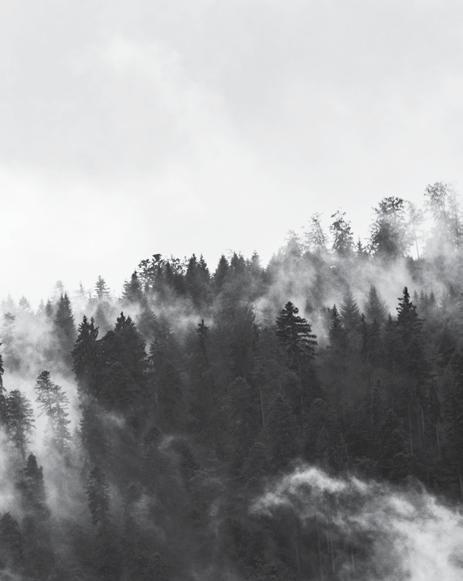
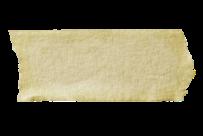



When you donate to WILD, $ 9 out of every $ 10 dollars goes directly to programs making important strides for the protection of our wild planet.

 WILLIAM BLAKE
WILLIAM BLAKE





Now is your chance to join WILD’s community in helping to heal our wild home. Your generosity is both fuel and inspiration to our team members who work tirelessly to help keep Earth wild.
Please consider joining us this year in this work as we continue to advance some of the most ambitious and necessary objectives in conservation. https://wild.org/infinite-wild/
For centuries, playing cards have been used for more than just games; they have frequently been used as tools of education by soldiers, medical personnel, and teachers as they work in the field.
This deck of cards can be used for both conventional games as well as for becoming better acquainted with the life-giving processes that make life on Earth so spectacular. Many call these ecological services, although here at WILD we consider that term too sterile to capture the vital gifts conferred by them and the natural landscapes in which they are embedded. For these reasons, we believe “life-giving services” is a far more apt description of the benefits we derive from wild nature.

We are proud to offer to each of our donors this year one card of the back design as a unique, carbon-neutral, tradable digital certificate as proof of their investment in WILD’s 2023 campaigns. The top 54 donors will also receive one of the card faces representing either a life-giving process or something that we, as people, can give back to nature.
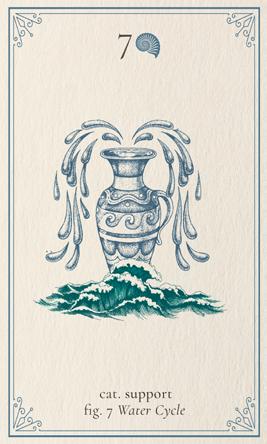
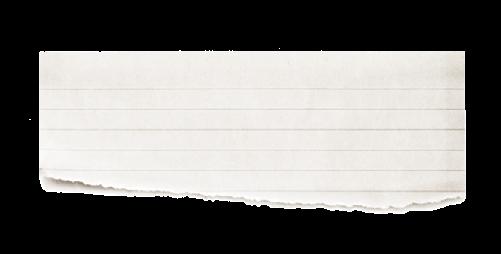

Scientists categorize ecological services into four distinct categories: support, regulation, provision, and cultural. In the Infinite Wild deck the four card suits are represented by one of these categories, with corresponding ecological services within each suit.


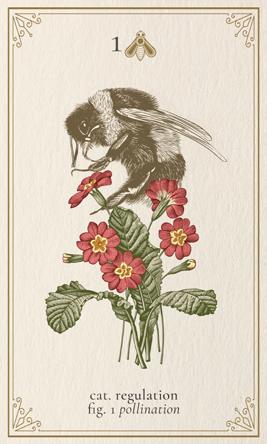

It’s not just people who need ecological services, ecosystems need them too. Support services are those that make possible different ecologies around the world. These services include photosynthesis, nutrient cycling, and water cycling.

For many, nature is synonymous with balance. That is due to the benefits of regulation services, which include: pollination, waste decomposition, and the prevention of soil erosion.


Nature nourishes us, and it does so through provisioning services. Fruits, vegetables, livestock, and fish all spring from ecosystems. A provisioning service is a benefit to people that can be extracted from nature. They include drinking water, timber, wood, fuel, natural gas, and plants.

Nature inspires us; it also shapes us. Cultural services are those that define us and our communities. It is a non-material benefit that contributes to the development of human communities, and it includes: recreation, cultural activities, spirituality, and scientific knowledge.
We look forward to a future in which our children and grandchildren are given a full deck of life-giving services because nature is complete. Thank you for sharing in WILD’s vision and helping to make a healthy and wild world possible.

You can learn more about the four types of ecological services below:

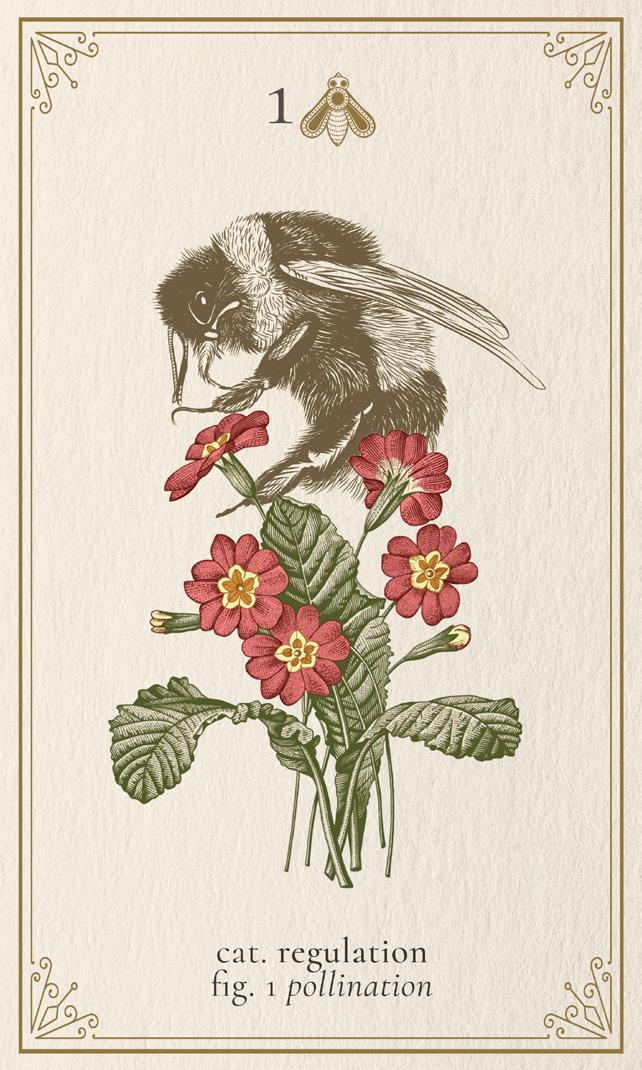



For many, the word regulation produces an uneasy and claustrophobic sense of involuntary duty – a lingering preoccupation with an “if only” time and place where such-and-such rule or protocol is as absent as shadows at noon.
In nature, however, regulation is the warden of life. Its many ecological services safeguard the margins of a living biosphere through which the infinite possibilities of biodiversity and human ingenuity are attainable. Perhaps most iconic of these regulatory services is pollination – the wild process through which flowers give birth to seeds, bees ferment honey, and farmers delight in bountiful harvests. Both ancient and new, pollination is an indispensable cornerstone of our living planet, zipping in and out of Earth’s most beautiful folds, trailing future generations of life in the same way comets trail stardust.




If COVID were a sound, it would be the sudden bang of a slamming door shutting billions of prisoners off from the world and each other. And just like any other jailer, COVID found its unspoken mandate in the increasingly prison-like conditions imposed on nature.
That is because when nature has space to flourish, spilling randomly and abundantly into endless forests, untrammeled meadows, and the genetic building blocks of plants, animals, fungi, and viruses – it naturally reduces the growth and spread of dangerous new viruses. This occurs by the protective shield of untrammeled wilderness and also through a process known as “dilution” which moderates the virulence of disease through the living mechanism of biodiversity.
The more profuse and diverse an ecological system, the less disease. In the case of disease control, regulatory ecological services are synonymous with biological abundance.



The peaty smell of a forest in autumn, rich and pungent as the color of leaves dappling the branches of trees and the dark, decomposing soil. A garden of earthly delights manifested in the space between the dying, frenetic summer, and emerging stillness of the frost. What magicians strove to master for centuries; nature easily handles every day. Decomposition, one of the first alchemical gateways of reincarnation, an early stage in the journey from one form to the infinitely interchangeable component parts of life.
In the wild, what we refer to as death, a term heavy with finality and loss, nature manifests as nothing weightier than transition from one lifeform to another, carried out with the careless elegance and magnificent efficiency of the ancient and perpetually renewing wild.




The very conditions that restrict our ability to journey to the stars and dart around the skies like Superman – gravity and magnetism – are also those same conditions that make possible on our planet the infinite combination and recombination of life. A tiny sphere of infinity, inside its confines the boundaries of possibility stretch across generations to an ever-receding horizon.
These same conditions effect carbon. Without them, all the carbon emitted by life on Earth would drift away, carried on the back of solar winds, into the endless black desert of outer space. Instead, Earth has its own unique systems for processing and recycling carbon, using sunlight and heat to transform carbon dioxide into organic matter. As we struggle to cope with the excess carbon two centuries of industrialization has unleashed into the atmosphere, recruiting nature as an ally and giving it the space it needs to remake carbon dioxide into life is a necessary and elegant part of any effective climate response.


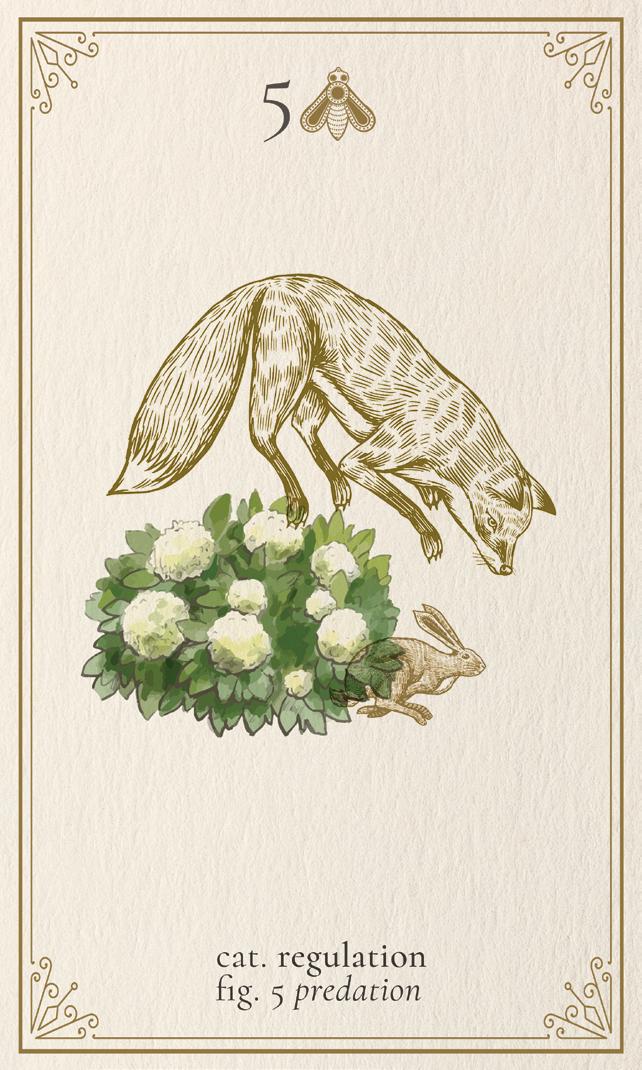


Tooth, claw, maw, growl. These are the implements of ecological balance. These are the weapons of hunger.
A shadow across the sun, a rustle in the tall grass.
Grazers on alert. The chase.
Population traffic cops come in many forms – silvery scales above a bright coral reef, eight legs lurking on a silken web –all of them lethal. Their primal duty a consequence of an authentic need – an empty belly – its vital importance to people and nature undiminished by the officer’s selfish motivation. Wheat grows to harvest because of predators, plague falters in its spread because of predators, ecosystems in warm tropical reefs and northern pine forests flourish because of the predators who spare the world from the depravations of too many vegetarians.
When giving thanks to nature, remember the predators, the hungry shadows whose pursuit of their next meal brings balance to the world.

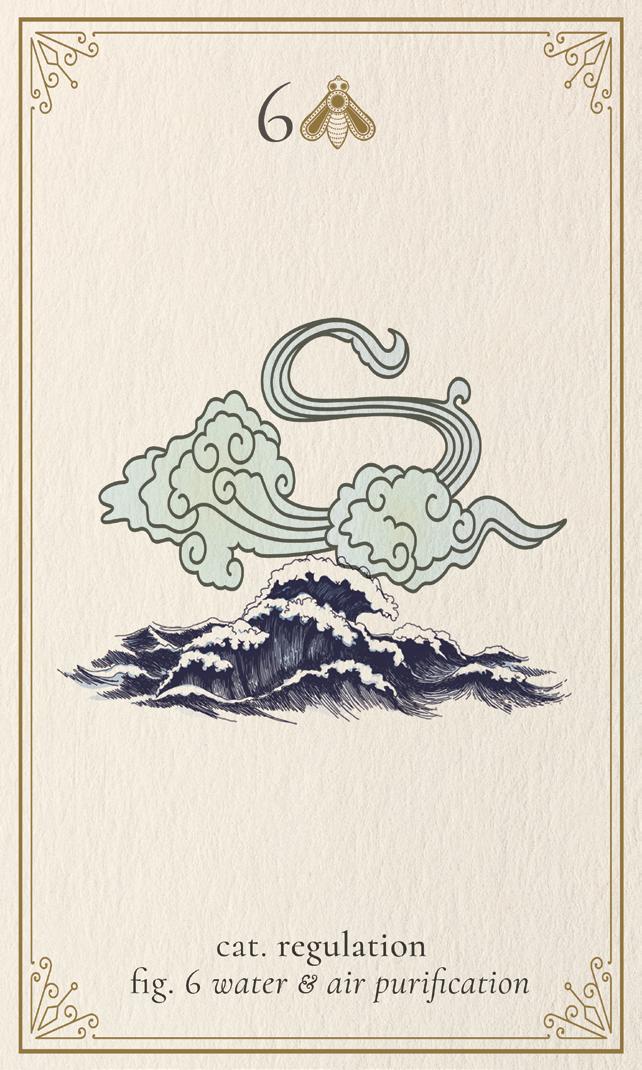
Have you ever wondered why so many of us feel at least a faint spiritual reverence beneath a dense canopy of leaves? Could it be not just a product of our imagination but rather an intuitive understanding of the purpose of leaves and roots and forests inside the larger biosphere? Because, in truth, the surface of every leaf is a permeable gateway between the world that we inhabit and an otherworldly laboratory of alchemical capabilities.
The alchemy of trees is as simple as breathing. With every breath they take (a phenomenon scientists call photosynthesis) they breakdown atmospheric pollutants into organic material they use to nourish themselves. And like trees, soils around the world possess a similar powerful potential. As water droplets seep through Earth’s pores to find fellowship in underground lakes, aquifers, and rivers, impurities disappear, captured by the rough surface of stone and dirt.
Thus, through slow and silent processes prevalent across the entire planet, Earth cleans itself and purifies the elements, air and water, we depend on most.




Picture a sponge. Unsung and domestic, yet indispensable in the aftermath of a clumsy mishap. Picture the ease with which we acquire the tool in those moments, and the unconscious disregard with which we discard it as soon as the mess is over.

Nature’s sponges – trees, barrier islands, bivalves, and root tangled soils – are far more useful than sponges, their consequence the difference between the inconvenience of spilled milk and the catastrophic aftermath of historic storm surges. They work only when they are present; they work better still when they flourish. And while we do not have to be conscious of their service to our way of life, we do need to consciously decide to protect them, to not discard them just because a mess doesn’t seem to be imminent. Rumor has it that humans practice foresight more so than other species. Let’s see if we can do so on behalf of ourselves and the ecosystems that protect us from floods.



Increasingly it seems that the immediate response to every planetary disruption – COVID, war, climate change –is to wring our hands over the implications for the economy. And certainly, the economy serves us (some of us more than others) and is a vital structure in our interdependent world.

But one wonders if sometimes the relationship doesn’t flip, and instead of the economy serving society, society is the one in service to the economy.
Shifting our economic priorities is an opportunity for us to serve ourselves and nature. How do we create an economy that can help us restore Earth’s biosphere and that will serve us and our progeny for generations to come. What decisions can we as consumers make to help bring about this transformation?
And what policies and choices can we as citizens invest in to accelerate change?


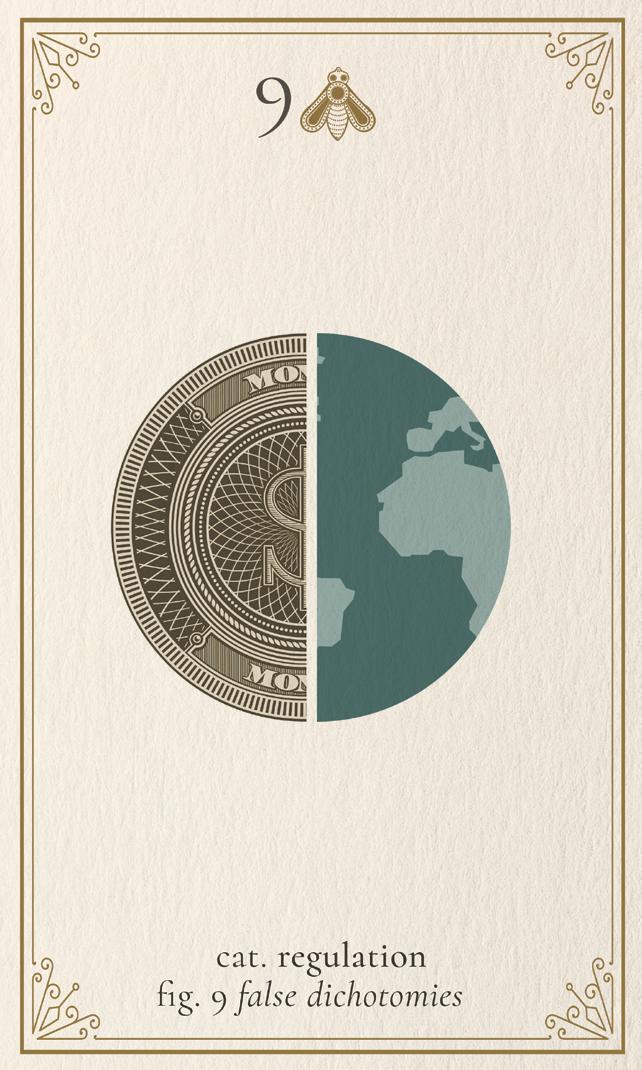

Not everything humanity brings to the table in our relationship with nature is a gift or service. Some things, like pollution, excessive carbon dioxide emissions, and the accelerating destruction of the natural world are disservices, to us and the planet. But all of those are symptoms of more fundamental problems and paranoias we have created for ourselves.
Chief among these is the belief in false dichotomies, those modern-day superstitions that restrict imagination, limit opportunities, and lend support to logical fallacies.
The perception that we must choose between nature and the economy and nature or our own well-being is driving the destruction of the living world upon which we all depend. In fact, our economy is embedded inside the biosphere. Without a biosphere, we cannot have a healthy economy.
When we begin to replace “or” with the word “and,” as in nature and human well-being, we can begin to understand that those who seek to protect nature are also, by extension, protecting humanity as well.




It’s a cold, crisp winter morning in the mountains. Your first conscious breath takes in microscopic ice particles suspended in the pine-scented air, sharp and frosty spices for the nose and lungs. It’s difficult leaving the cozy comfort of your bed, your skin contracts against the frigid temperatures, as you dive for something, anything, warm – coffee, a fire, your lover’s arms. And yet, despite the discomfort of the glacial mountain winter you feel keenly clean, fresh, and healthy.
As you shiver before the hearth, close to the people you love most, you are certain that you never want to leave.
The first shock of reality after years of sedating illusions can feel like an unexpected dunk in an icy lake. And for many, the experience is so distasteful they never dip so much as a toe in the ice ever again. But for those who find their breath in the cold austerity of reality, the experience is liberating and purifying, bringing us closer to the primal necessities that matter most: warmth, companionship, our connection to the wide living world.




The funny thing about creativity is that it tends to be at its best within limits. No one feels particularly inspired to offer high praise to the innovator in possession of every advantage and a clearly marked roadmap to their destination. But the maverick MacGyver building a rocket to Mars inside Alcatraz with nothing but a shoelace, a paper clip, and a roll of duct tape – now there’s a hero worthy of our every accolade!
When Ada Lovelace invented the first algorithm that would, a century later, become the basis for the digital age, not only did the computer, as contemporary people understand it at least, not exist, but Lovelace herself also confronted every disadvantage a woman does inside a rigidly patriarchal society. This could be the reason that few, if any, in her generation appreciated her accomplishment. And yet, her innovation would revolutionize the world. It was the twilight of limits that made her genius shine that much brighter.
When we operate within appropriate ecological constraints, we neither exclude nor dim innovative potential; rather, we enhance it and create the conditions to foster and amplify genius in all its many forms.




Once upon a time there were two little boys, brothers, who cried, helpless, alone, and abandoned in the inhospitable wild. Along came a female wolf, who seeing the children, recognized them for what they were, two juvenile lifeforms in desperate need. She took them as her own and raised them in the wilderness. Her compassion gave rise to the two founders of one of the world’s greatest empires, for the brothers were none other than Romulus and Remus, the founders of Rome.
Just as Rome was born in the wilderness, so too are the boundaries between human civilization and the wild biosphere blurred. If humans are a product of the wild- isn’t our civilization also a fruit of wilderness? That is why clarity in boundaries can be so important. Science tells us that at least half of Earth’s surface must remain in such a state that human activities do not interfere with nature’s ecological destiny. In the same way a child would not survive if she were to cannibalize her mother, we too must give space to nature.




The oldest story we know is about two unrelated men, a god-king and a wildman, who became friends and by doing so discovered what it means to be human. The tale of Gilgamesh and Enkidu is relevant still in this modern era as we grapple with our own place in the world: one foot in dreams of a divine end-of-history scenario and the other in the very real, human, and biological reality of our place in the biosphere. And yet, when we come together in friendship and fellowship, we make possible what could never exist if we remained isolated and alone.
Ian Player and Magqubu Ntombela are the founders of the WILD Foundation and its sister organizations in Wilderness Foundation Global. At a time when the friendship of a white man and a Zulu elder was practically illegal in apartheid South Africa, Ian and Magqubu worked together to accomplish something no one else had done, saving the Southern White Rhino from the brink of extinction, and removing it from the endangered species list.
But their friendship was about more than saving one species, it was about a spiritual awakening, the coming together of two vastly different worlds – Western ideals and Zulu animism –forging an ethic of care and compassion that bridged eternity.


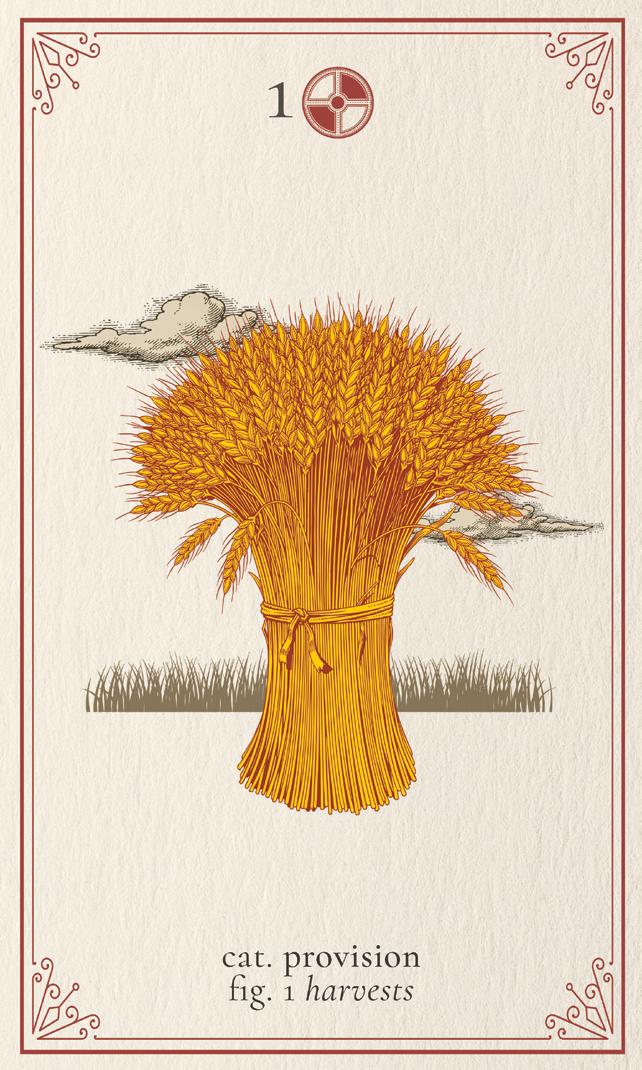
Picture an autumn stolen whole from a New England postcard.

An extravagant explosion of leaves on a landscape replete with rich farmland and thick forests, dotted with barns bedecked in haybales and jack-o-lanterns, not an inch left for nuanced restraint here.
An autumn that tingles like spiced cider on the tip of your tongue and rings like the celebratory shrieks of haymaking festivals in your ears. This is primal autumn, Everyautumn, the unfurling of a season defined by harvests.

Now picture an autumn without a harvest. No bees tilled pollen in the fields in the summer nor rainfall nurtured tender roots in the spring. The dead soil never coaxed seeds from plants, nor did the temperature play host to new life. Nature could not support a harvest, and so autumn never truly came.
When we defend nature, we defend harvests, most iconic of all provisioning services, unleashing the potential for seasons replete with abundance and joy.




In ode to the squat, the Persian poet, Hafiz, once recounted and was later translated by the contemporary writer, Dan Ladinsky, a story about two lions.
A royal temple has been built in a sacred forest on the exact pot where for thousands of years great lions have loved to piss. God does not like this. His cherished beasts no longer able to leave their holy scent in the jungle near a favorite resting spot of God’s left toe. My dear, I am about as far from a sacrilegious man as this world can endure, for I have found the power to say “no” to any actions that might harm myself or another. Love reveals man is so endowed to “lift his leg” upon galaxies.



In ecology, large-scale changes – ice ages, mass extinctions –are often driven by profound astronomical shifts. The Earth’s axis tilts, a meteor strike wipes out the dinosaurs.

But in society the headwaters of change are more elusive, if no less dramatic in result. What can seem like the precursor –a brilliant idea, a stirring speech – if often only a symptom of a far more momentous force – a movement of people working in coordination to achieve a common objective. A coalition.
Coalitions are vehicles for the most revolutionary changes in human history. Civilization, industrialization, democratization – these are the progeny of coalitions. Which is why WILD and its greater community of partners and supporters are building coalitions, day in and day out, because one of these days our survival will depend on the wildernesszation of our communities. When that day comes, will we be standing in unity with others, prepared to choose a future for our species and its biosphere?

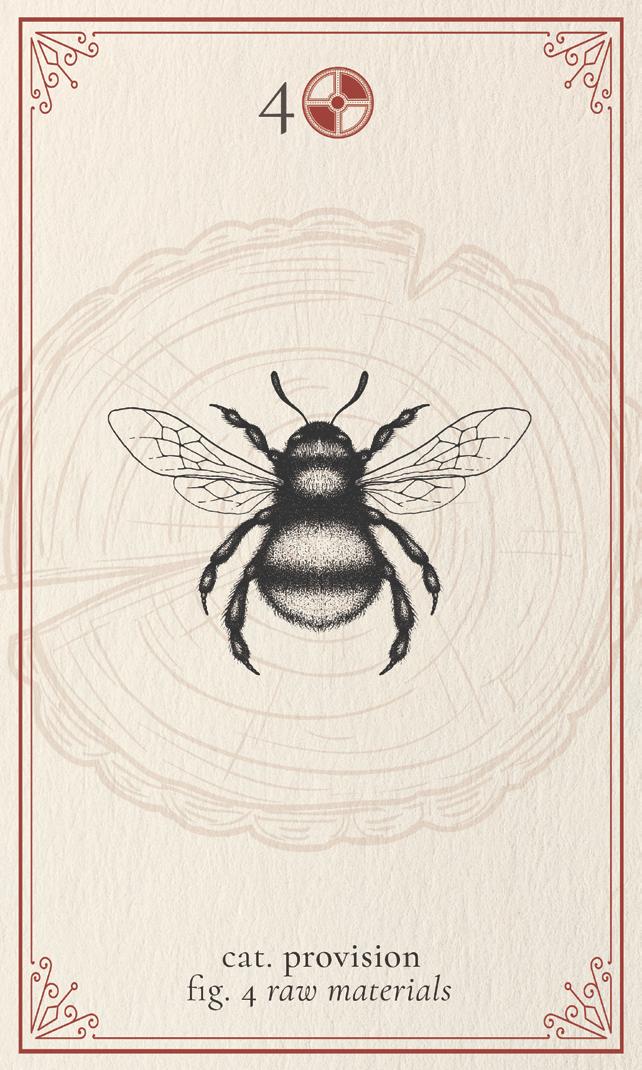


For millennia most societies have possessed an absurdly simplistic understanding of nature: the natural world is only valuable when it is transformed. Forests to timber. Animals to meat. Mountains to coal. Meadows to wheat. As individuals we have often harbored far more sophisticated views than society because intact nature has the power to convince us of its divinity, an appreciation that rarely made the leap into communal decision-making. Even as we have stripped nature of resources, nature has stripped us of assumptions.
The awe-inspiring landscape that reminds us we are small yet whole. The clear-eyed regard of the stag assuring us that we are not alone. The soft elegance of the meadow in spring proclaiming the triumph of life after death. We are only just coming to the understanding that such things are as necessary for our physical survival (if not more so) as wood, oil, meat, and bone, but for centuries we have comprehended as individuals a vast terrain of raw and rugged truth. How much longer will society be able to ignore this raw truth in pursuit of raw materials?
What can we as individuals do to aid this awakening?




Rachel Carson, one of the founders of the modern environmental movement known for her research and campaign against the industrial poisons known as pesticides, had quite a lot to say about the healing power of nature. Although many of us know nature to be the wellspring of some of our most powerful and acute cures, whole and undiminished nature is also a remedy for the more toxic elements of society.
Carson was no stranger to this fact, making the following observations in her campaign for a saner, more restorative, and more medicinal world.
“Those who contemplate the beauty of the earth find reserves of strength that will endure as long as life lasts.
There is something infinitely healing in the repeated refrains of nature – the assurance that dawn comes after night, and spring after winter. . . Why should we tolerate a diet of weak poisons, a home in insipid surroundings, a circle of acquaintances who are not quite our enemies, the noise of motors with just enough relief to prevent insanity? Who would want to live in a world which is just not quite fatal?”




Taking is the norm, especially from nature. Just ask most economists and quite a few politicians. Not only will they likely agree with this statement, but they will probably proudly defend it as a sign of their virtue, evidence that they prioritize human well-being (or at least, the well-being of their constituencies).
Philanthropists who support wilderness conservation are turning such arguments on their head, demonstrating that not only can we give back to nature, but doing so is as beneficial for people as it is for wildlife. As we consider what service people can offer the planet, philanthropists who give generously according to their means (whether that’s $5 or $5 million) offer a powerful behavioral model and an opportunity to discover the transformational potential of generosity.

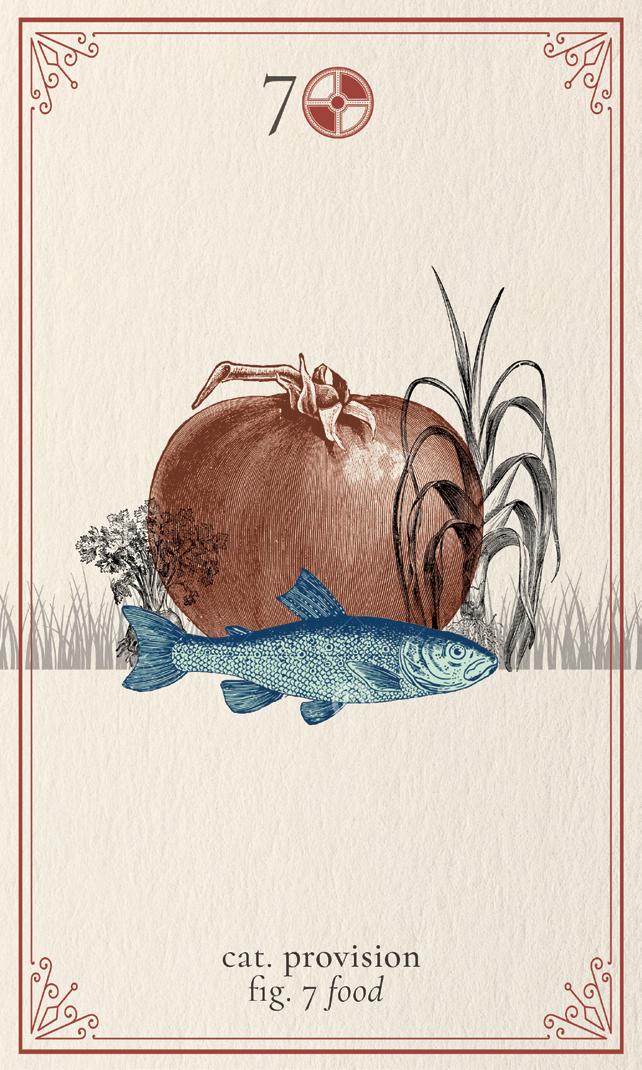


“There is something about very cold weather that gives one an enormous appetite. Most of us find ourselves beginning to crave rich steaming stews and hot apple pies and all kinds of delicious warming dishes; and because we are all a great deal luckier than we realize, we usually get what we want—or near enough.”
~ Roald Dahl, Charlie and the Chocolate Factory
The United Nations estimates that every day 1.7 billion people depend directly on nature for their subsistence. While many of us believe that the connection between food and nature must first pass through some intermediary or another – a farm, a farmer, a factory – for over 20% of Earth’s population, this isn’t the case. Their meals arrive directly from wild waters, woods, and hillsides – fish, nuts, herbs, mushrooms. A statistic that demonstrates the radiant link between the health of wild nature and the health of people. Maintaining our good fortune and the good fortune of others is, in many cases, as easy as stepping back and leaving nature alone.

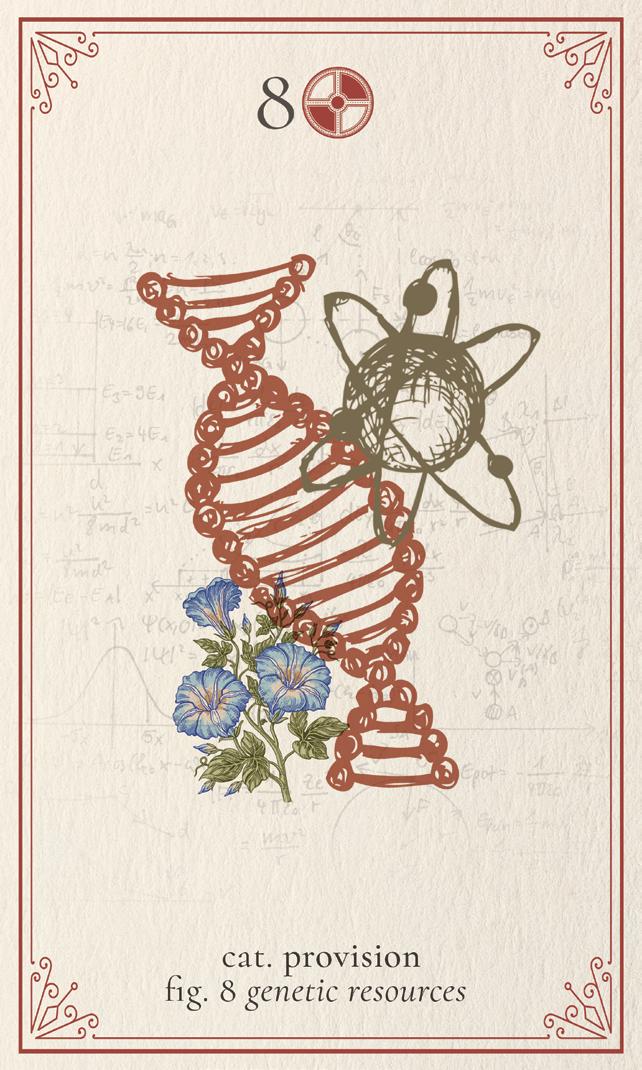

Crop improvement, pharmaceutical development, even industrial processing all owe a debt of gratitude to nature’s vast array of genetic resources. Most industries using genetic resources to develop commercial and industrial products initially sourced genomes in the wild. Even though numerous specialized nurseries now exist to help businesses source genetic materials, scientists are still in pursuit of new genomes, especially in extreme environments, such as salt lakes, deserts, caves, and hydrothermal vents.
Nature’s ability to continually reinvent itself has made it the best laboratory for new genetic resources.





Persephone, the goddess of spring, was kidnapped from her home, forcibly taken to the Underworld, and when finally rescued, tricked into returning on an annual basis. She is amply and unfortunately familiar with coercive tactics and villains. But while Persephone may retreat, she never truly submits. Each year, she returns to transform winter into spring, carrying with her a rebellion of light and life.
Persephone is a worthy patron of wilderness conservationists, a reminder that revolutions can be tender as budding trees and as unremarkable as greening meadows, and an urging for the next revolution to be a restorative one.
Because nothing short of a revolution is needed when it comes to our relationship with nature.



“Hope is definitely not the same thing as optimism. It is not t he conviction that something will turn out well, but the certainty that something makes sense, regardless of how it turns out.”
~ Václav Havel, Czechoslovakian leader of the Velvet Revolution
All momentum in nature starts with a molecule destined to join forces with other molecules. Together these microscopic particles form snowflakes and raindrops, grains of sand and atmospheric vapor, brought together by chance until the moment when, conditions being just right, a glacier, avalanche, river, or storm bursts into existence carrying with it the weight of patient billions.
Because chance plays such a fundamental role in creating such momentum in nature, it is relatively rare. But in society, driven by human choices and decisions, how much more frequent can it be if we only decide to take the first step of linking our own efforts with those of others?


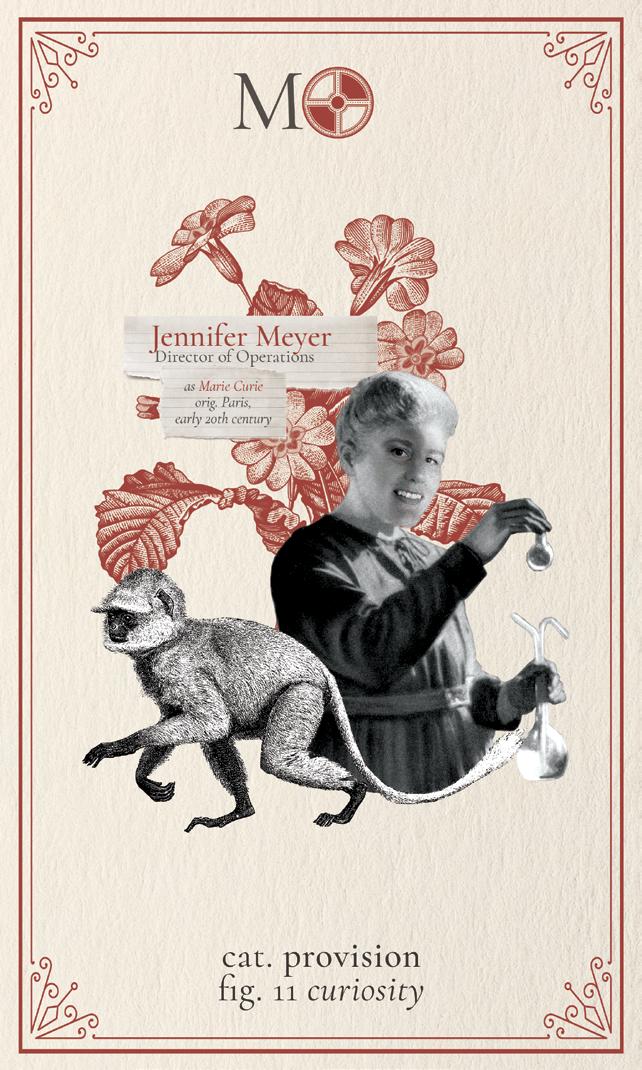


Marie Curie was the first woman to win the Nobel Prize and the first female professor at the University of Paris. The intellectual effort that won her so many accolades sprung from an insatiable and primal curiosity. That curiosity was evident not just in the questions she asked but also in the actions she took.
Before she was revolutionizing science and our understanding of radiation, Curie was a student of Poland’s “Flying University” –a clandestine educational institution established to educate children even when the curriculum defied state-sanctioned ideology.
Before world-changing ideas comes world-changing questions born from heroic leaps of intellect and humility. When we admit our ignorance about nature and start asking questions, we embark upon a great adventure to uncover mystery and a better relationship with the wild world

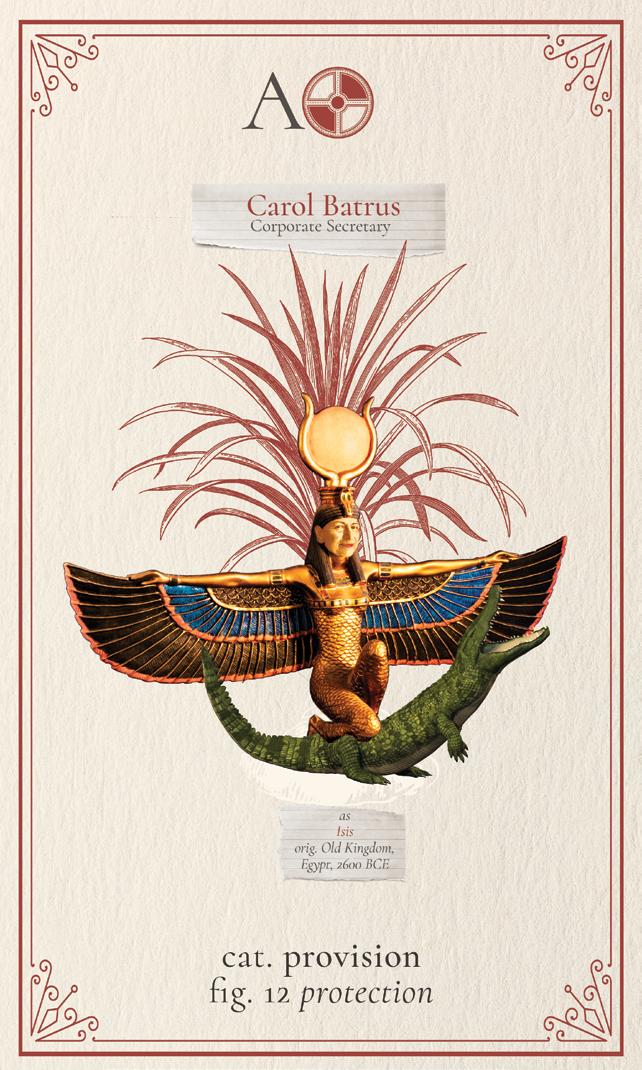

In search of the desert witch, the shamaness forget the archetypes, forget the dark and lithic profile, do not scan the clouds massed on the horizon, violet and green, for her icon, do not pursue the ready-made abstraction, do not peer for symbols. So long as you want her faceless, without smell or voice, so long as she does not squat to urinate, or scratch herself, so long as she does not snore beneath her blanket or grimace as she grasps the stone-cold grinding stone at dawn so long as she does not have her own peculiar face, slightly wall-eyed or with a streak of topaz lightning in the blackness of one eye, so long as she does not limp so long as you try to simplify her meaning so long as she merely symbolizes power she is kept helpless and conventional her true power routed backward into the past, we cannot touch or name her and, barred from participation by those who need her she stifles in unspeakable loneliness.





Ian Player, one of the men who helped save the Southern White Rhino from the brink of extinction and WILD’s founder, famously declared that “conservation is a rear-guard action.” What he meant by this is that conservationists are always on the defensive, desperately trying to ensure that there is something left to protect here and there even as the destruction of nature everywhere accelerates.
With so many forces arrayed the preservation of an intact and wild biosphere, it can be easy to lose sight of our responsibility to succeed. That regardless of the probabilities, the trends, and the obstacles, we have a responsibility to ourselves, our children, the future, and to Earth’s many other lifeforms to fix what is broken and restore a healthy and sustainable relationship with nature. For some, such a responsibility can feel like an impossibly heavy burden. But for others, it sets them free. How does such a responsibility liberate us in word and deed to manifest change for wild nature?



The benefits derived by community may not be immediate or direct, but they are enduring. After all, the human ability to form and sustain complex communities is one of our strongest survival traits. If we were motivated by immediate benefits alone we would be incapable of community, to the detriment of our species.
Supporting ecosystem services are similar to the actions and protocols necessary to have a healthy and vibrant community, only instead of building a community of people, supporting services build the community of the biosphere. In several seminal environmental documents including the 1987 Brundtland Report and Pope Francis’ Laudato Si, the environment is referred to as “our common home.” Recognizing the role each lifeform has in the maintenance of this home is essential for its survival.



Those looking for help in overcoming a tendency towards micromanagement need look no further than the way nature produces and reproduces life – a thoughtless, random, reckless process to be sure, but one that has yielded an extraordinarily unique, rich, and successful biosphere.


Generation after generations, trillions of genes combine in countless combinations to reproduce a species. Some offspring will be nearly identical to their forebears, but a few will not. A few will be different. A shorter wingspan here and coarser bark there. And while most of these variations won’t matter either way, on occasion a few will affect the survival of the individual and the species.
For hundreds of millions of years, without any management whatsoever, nature has produced the most spectacular biosphere we have yet to encounter. What is possible if we step aside and let it function as it has?




0:48-1:01 Watch the clip here ➤

“You guys are entering that sacred time, when now you have to call upon something bigger than you.”
~ Regina Lopez-Whiteskunk, Ute Mountain Ute Tribe




Alchemists seek to liberate one element from its fixed physical properties and transform it into another. Notoriously secretive, their experiments often result in failure although this fact did not deter centuries of philosophically inclined individuals determined to uncover universal laws governing the transformation of matter.
Even as generations of alchemists labored in dank laboratories over smoking alembics, billions upon billions of plants were effortlessly and daily executing their own alchemy.
Powered by sunlight, plants absorb carbon dioxide through their leaves and transform it into nutrients that are then circulated throughout the rest of the plant. In so doing, they remove carbon from the atmosphere to store it safely in the undisturbed roots and soils of forests, bogs, and meadows. The byproducts of this process include oxygen and a breathable atmosphere.
Not the Magnum Opus alchemists want, but perhaps the Magnum Opus we need.



Miracles are not as rare as some might think. In fact, without the uninterrupted operation of some miracles, life on Earth would cease to exist.

Take the nutrient cycle, disregarding for a moment that this term likely appears as bold-faced print in hundreds of biology textbooks around the world. Its inclusion in such contexts does not in the least dim the radiance of its wonder. This process transfers nutrients from abiotic environments (the sky, salt water, rocks) into biotic lifeforms (you and me included) and back again (thanks to worms, arthropods, and fungi), nourishing generations of life for hundreds of millions of years and reminding us that however impossible it may seem, life somehow sprung into existence within an unavailingly sterile, biological vacuum.
Behold! The miracle of the nutrient cycle, indeed!

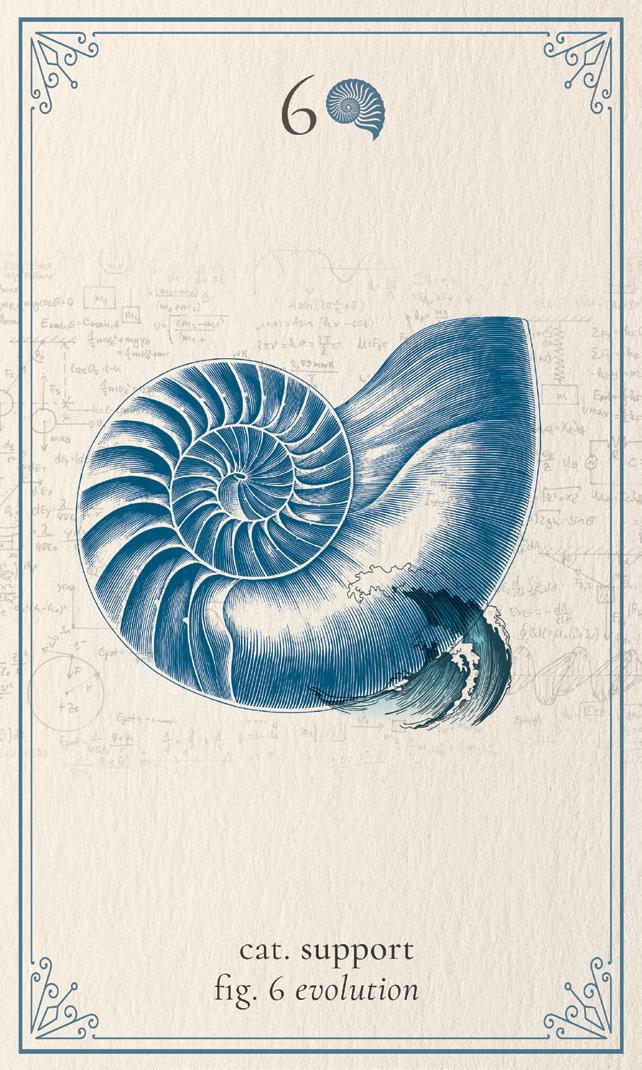

“In the long history of humankind (and animal kind, too) those who learned to collaborate and improvise most effectively have prevailed.”
 ~ Charles Darwin
~ Charles Darwin
Life holds more meaning when the past ties into the present. When this happens, we gain assurances that the present will also tie into the future. The biological ties that link us to our most distant ancestor and our not-yet-conceived progeny are the accumulation of successful experiments, genetically and socially. A far cry from those who would misrepresent evolution as the “survival of the fittest,” Darwin and others observed that flexibility and cooperation are actually better indicators of survival.
Do the same principles apply to the evolution of the conservation sector? Can a more experimental and creative approach yield a more effective wilderness movement?



The Earth is a vessel that fills itself, capturing and releasing rain and snowfall in what is known as the water cycle. Where and when water releases from the gentle vapor banks of the sky determines when and where the farmer plants and what seeds.

Forests and wildlands play a crucial role in patterns of rainfall. Absorbing large amounts of water vapor from the air, trees –especially in rainforests – set in motion rainfall as the condensing vapor lowers atmospheric pressure inviting larger and larger downfalls. The more trees, the more rain. The reverse is also true which is why the loss of even small amounts of a rainforest can lead to an irreversible shift in the ecosystem.
Of the many services provided by trees, rainmaker is one of the least recognized.



“All life depends on soil . . . There can be no life without soil and no soil without life; they have evolved together.”

~ Charles E. Kellogg, USDA Yearbook of Agriculture, 1938
Soil is as alive as an ocean or a forest. Within its clay and loamy sheets dwells the multitude of wild creatures responsible for the nutrient cycle, the creation of more soil, the capture of carbon, and the natural fertilization of all plants. Soil breathes, it drinks, it feeds, and it excretes . . . more soil out of which the foundations of mighty forests and great civilizations arise. It is futile to consider life without soil, as futile as crossing the Sahara without water. But far from constraining us with its necessity, soil liberates us, energizes us, empowers us to tap into all our creative potentials – farming, masonry, sculpture – embodying soils’ own regenerative and creative function.


The problem with the term “sustainable future” is that it takes the emphasis away from what must be done now to achieve it. It’s as if this future will arrive with the discovery of some new technology or the election of different, more visionary leaders with little to no involvement of the individual reading the term.


The unwary reader might be lulled into a sense of passivity.
Mahatma Gandhi said that “The future depends on the actions we take today.” We can no longer afford to put off sustainability. What steps can we take now to make a more sustainable present on the journey to a truly sustainable tomorrow? For starters, protecting the wild nature that remains is critical for a sustainable and healthy future.




It is said that the goddess Aphrodite emerged fully-formed as a mature adult from the ocean foam. In the same way, many of us are born with an innate sense of wonder and appreciation for nature. As children we marvel at flocks of geese passing overhead, cocooning caterpillars on unfurling leaves, and baby animals gamboling in open fields. This wonder never really leaves us, and oftentimes deepens, even if we become more adept at concealing it.
The appreciation of nature is a critical condition for its protection. Celebrating our own childish wonder of wilderness is an important first action we can take that will help make all other actions easier.




“The tree which moves some to tears of joy is in the eyes of others only a green thing that stands in the way. Some see nature all ridicule and deformity... and some scarce see nature at all. But to the eyes of the man of imagination, nature is imagination itself.”
~ William BlakeIdealism begins as an act of imagination and a belief that the world of the imagination can manifest into the world of the material. This is a fundamentally human gift, one that d efines our species and is the very bedrock of civilization.
Justice, democracy, the rule of law are gifts of imagination and idealism. Grind up the universe into grains of sand and you will not find one speck of civil rights. But through the miracle of human idealism such powers are born, shaping and reshaping society and the world.
How can our idealism fuel a wilder planet?




The bone dry and searing hot environment of the Gourma region in West Africa, home to one of just two remaining herds of desert elephants, bursts into devastating wildfires with the provocation of the smallest embers. Even a carelessly discarded cigarette butt can result in enormous conflagrations. When the rain comes, it not only nourishes the crops and trees that support people and elephants, it also soothes the land, providing a momentary relief from the threat of wildfire.
The people there believe that the elephants help bring the rain. And, in fact, they do. Because elephants are essential for the growth and spread of acacia forests, and because trees are instrumental in the water cycle, the elephants are rainmakers. So are the people, like Nomba Ganamé, field manager of the Mali Elephant Project, who care for the elephants. Care is a service people provide nature so that nature can continue to provide for us.




Tethys is the titan goddess of primal water. The wings upon her brow signify her role as mother of rainclouds. To the Greeks she was nurse and grandmother, surpassed in her compassion for life only by her mother, Gaia, the Earth. Tethys is also the name of the great sea located between the continents of Gondwana and Laurasia, the remnants of which remain to this day as the Mediterranean, Black, Caspian, and Aral seas.
Just as life’s relationship to water reveals the fundamental truth of the interconnectivity of all things, so too do feelings of compassion – literally meaning “together feeling” – shed light on our indivisibility from nature and each other. Compassion is the emotional recognition in a cosmic wholeness so vast and profound it is difficult to comprehend with reason alone. Thus, compassion is a wellspring of action as we divine that the suffering of another is also the suffering of our own self.

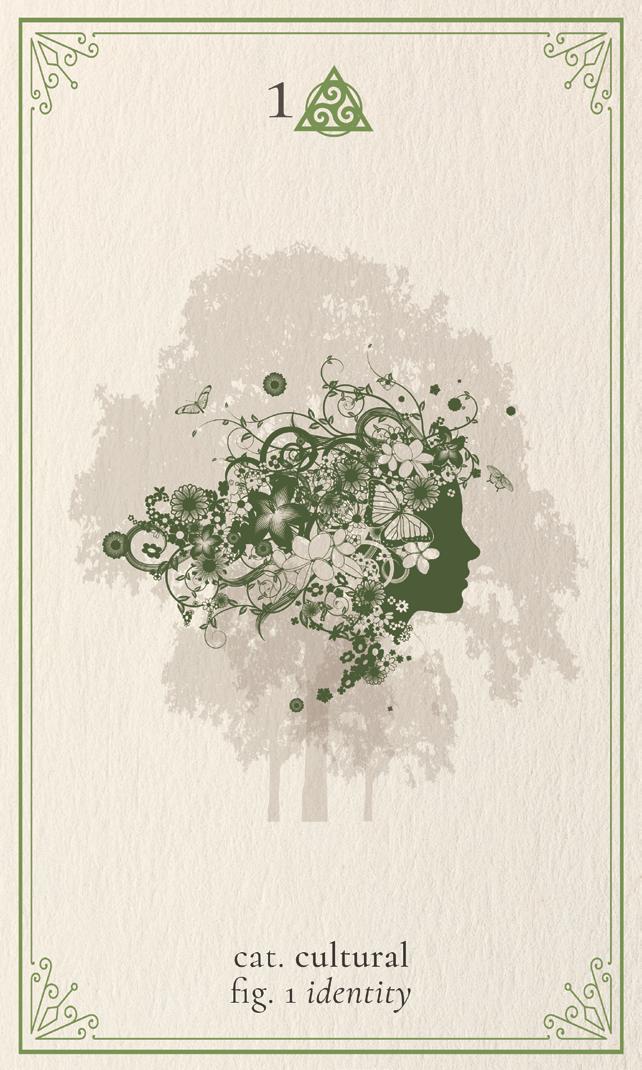


Far from being distinct from nature, human culture is a product of our imaginations and problem-solving capacities responding to the threats and opportunities that emerge from the wild. On a deeper level, our biological identity sprung from Earth’s natural process. The British author, Terry Pratchett, said it best when he observed:
“Once we were blobs in the sea, and then fishes, and then lizards and rats and then monkeys, and hundreds of things in between. This hand was once a fin, this hand once had claws! In my human mouth I have the pointy teeth of a wolf and the chisel teeth of a rabbit and the grinding teeth of a cow! Our blood is as salty as the sea we used to live in! When we’re frightened, the hair on our skin stands up, just like it did when we had fur. We are history! Everything we’ve ever been on the way to becoming us, we still are.”

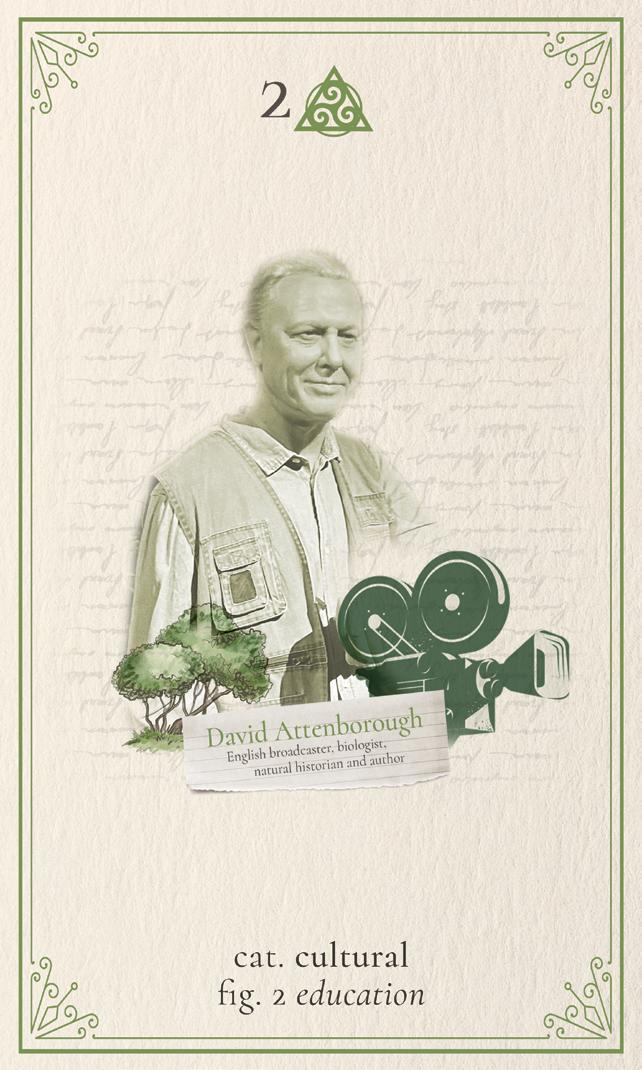


Nature is the greatest teacher, every phenomenon we witness a lesson crafted in the wild. But education is also a service we can provide on behalf of nature. Curriculum that enhances the student’s innate wonder for the wild world reinforces our own natural inclinations and bolsters an ethic of care in impressionable minds full of potential.
Perhaps this is why the British natural historian, David Attenborough, is beloved by millions. His own erudite wonder of nature gives us permission to revel in the spectacle of creation.

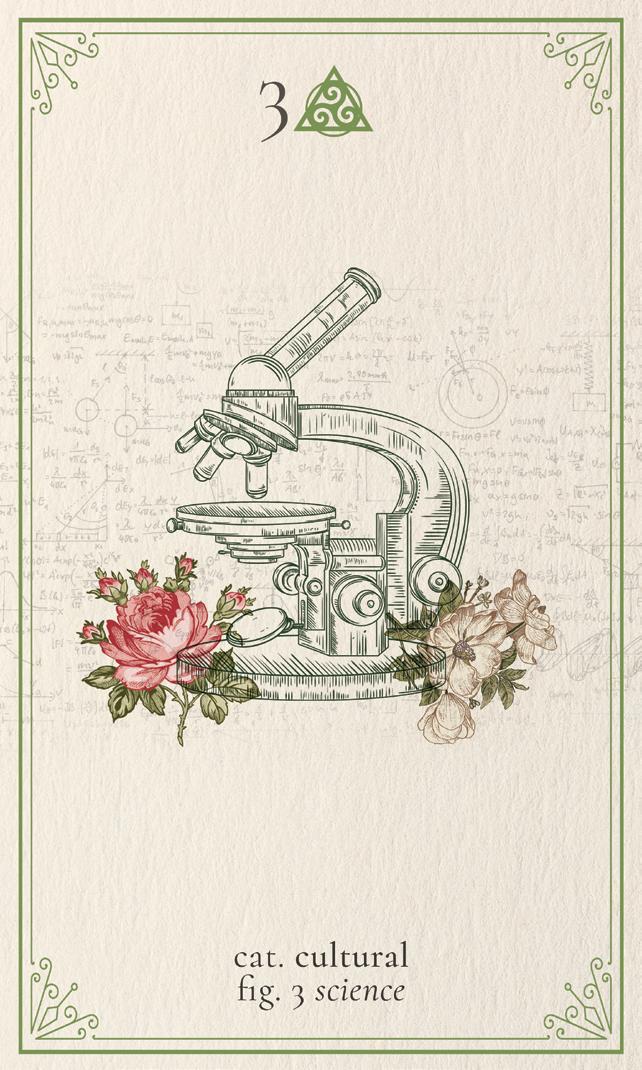


Where would science be without abundant and intact nature? Where would scientists go to conduct research and learn about the processes that define us and upon which we depend? Sure, some research can take place in laboratories, but even such domestic science often requires initial field studies.
One of many cultural ecosystem services is the support and enhancement of the scientific endeavor. Although science as it is practiced today is often seen as the result of rational thinkers and the Age of Enlightenment, the basic methods of science – observations, questions, experimentation, and replications – have been practiced for millennia in hundreds of cultures and have depended heavily on access to the natural world.

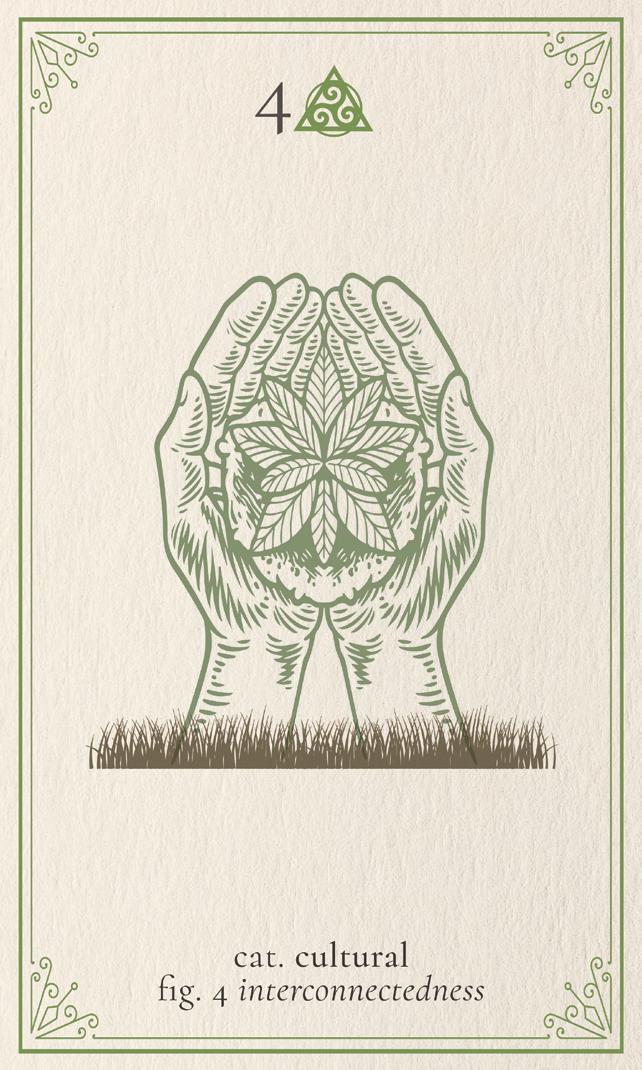

How often have you stepped into a forest only to sense the world shift around you? Whereas before you may have felt entirely alone on your hike, suddenly there seems to be a presence around you, almost as if someone else is now accompanying you on your journey.
When Rachel Carson exposed the devastating impact of pesticides on nature and people, she wrote about the interconnectedness of all things. Individuals who seek to control or alter one part of the system, cannot do so without sending out reverberations that will change other elements of nature that once seemed remote. This recognition can be born as a burden of responsibility or received as a gift because its implications reach far beyond material relations. Whether we are conscious of it or not, nature is always with us. No wonder so many religions have found their doctrine and inspiration in the wild.

“In nature, nothing exists alone.”
~ Rachel Carson, Silent Spring




Imagine a conifer-rimmed alpine lake stolen whole from your fondest summer memory. Extravagant sunlight glitters over walleye-tail ripples, intermittently blinding you with hot impressions of a silk blue sky and deep forest shadow. Every day of this summer begins with the earthy-clean fragrance of a mountain morning: pine resin and campfire smoke. Your heart beats excitedly, impatiently, in your chest, restless for adventure.
Wild nature is the destination of our memories, dreams, and adventures. Within its woodlands and shorelines we find a respite from routine and an assurance that somewhere outside the hustling din of commutes and offices, tranquility reigns. When we protect wilderness, we protect so more than just the place, we protect human experience within the place. We protect our own ability to return, time and again, to the wild.

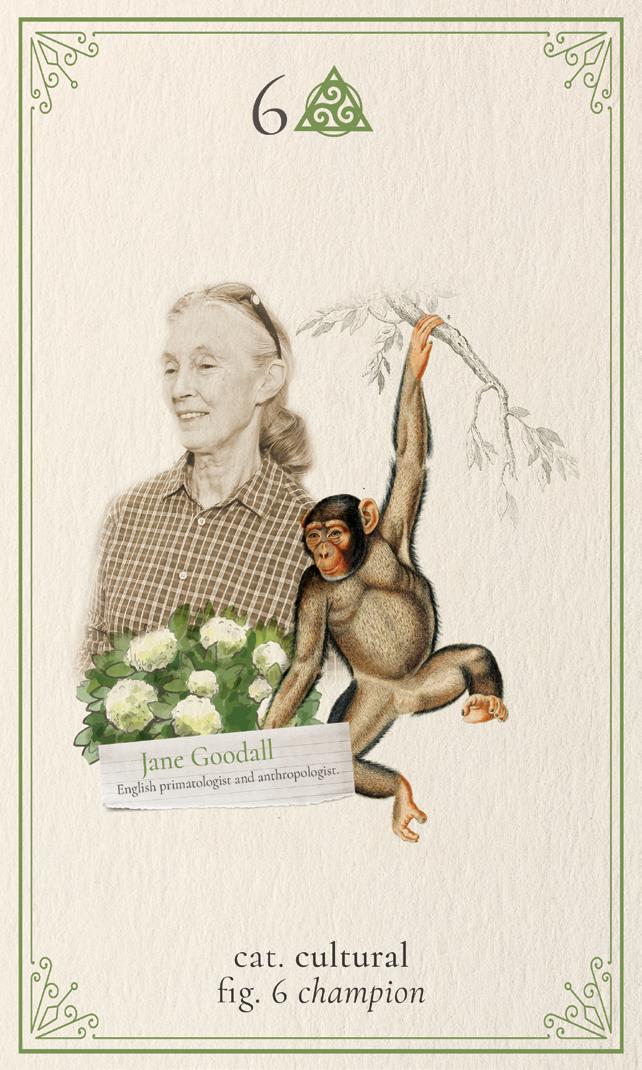

What does it take to be a champion for the wild? In addition to compassion and courage, those who are wilderness advocate – whether on the global stage or as influencers within their own networks and communities – have an unwillingness or inability to whittle themselves small enough to fit convention.
Those who are the best advocates for nature are a little bit wild themselves. Not the kind of wild defined by a reckless and uncontrolled license to test boundaries with little regard for others, but rather wild with freedom granted by the awareness that the most ancient of boundaries are not those imposed by society, but the ones set forth by Mother Nature herself. In pride and in humility, nature’s champions place themselves at the mercy of what lies behind the campfire’s light, venturing forth to challenge the way we think, the way we live, and the way we relate to the wider world.


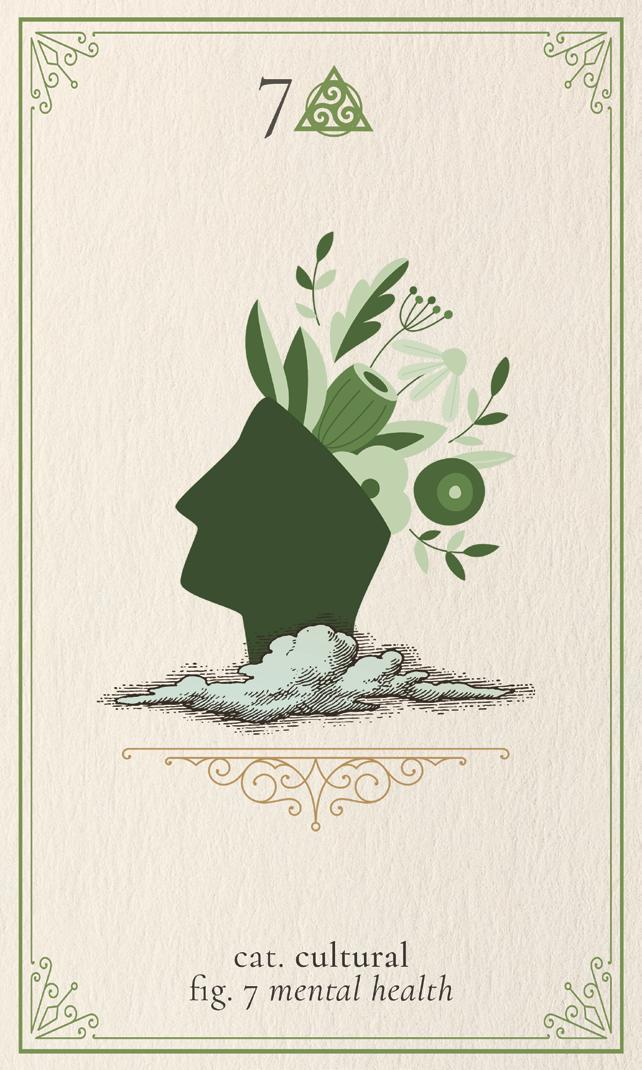

The more complex and demanding modern life becomes, the more we need the wild to soothe our nerves and center our spirits. For nature isn’t merely an ally for physical existential challenges like the climate and extinction emergencies. Nature is also a stalwart ally when confronting psychological and spiritual existential challenges posed by disruptions to mental health.
As our world continues to face a barrage of new threats to our economies, ecologies, and everything in between, our psyches are bound to suffer. Turning to nature as therapist and counselor is a proven remedy for many suffering from the mounting pressures of life in the Anthropocene.




If people have a purpose, a solid argument can be made that it is to create. After all, since the dawn of our species we have been creating: rock-hewn tools and fat-bellied goddesses, umber figures painted upon a dark cave wall, bright beads dangling on a sinew string, and electric stories pulsing between the ears of our children.
Of nature’s many creations, humans are the creators.
Turning this purpose to nature is one way we give back to the wild.





In turn-of-the-twentieth-century Russia, numerous writers, artists, and intellectuals called for a revolution to cast off the brutal oppression of the Tsar’s regime. But when the revolution finally came, many of the same artists and intellectuals were quickly disappointed with the result. In increasing despair, they turned their works against the new regime, becoming dissidents in the process, and facing censorship and worse as a result. But as they wrote, composed, and painted they seemed to unify their work: there’s never a final revolution, there’s never an end-of-history.
Every generation must save the world for themselves. What one cohort of humans accomplishes, another can undo and reverse. This is why mentorship is so important. As we are saving the world in our time and place, we are also responsible to prepare the next in-line to do the same. When we mentor youth, we serve nature.


Several years ago, a woman found herself on the island of Hawaii having a very bad day. It seemed as if everything that could go wrong, was wrong. And not just the little things, but big things too, things with lasting and irreversible consequences. As she retreated into the back of a cab, a tear streaked down her cheek, and the driver, a handsome Polynesian man, noticed.
“You know,” he gently said, “it seems like you could use some good Ho’opnopono.”
Her brow furrowed, and she wondered if he was offering her a drug, but the man quickly explained. Ho’oponopono is a traditional Hawaiian belief, he said. It helps comfort the troubled through the power of responsibility and forgiveness.


“But I’m not to blame for my problems,” she protested. The man shook his head and warned her against confusing responsibility with blame.
“When we accept responsibility for the problems of the world, we become empowered to heal them.”

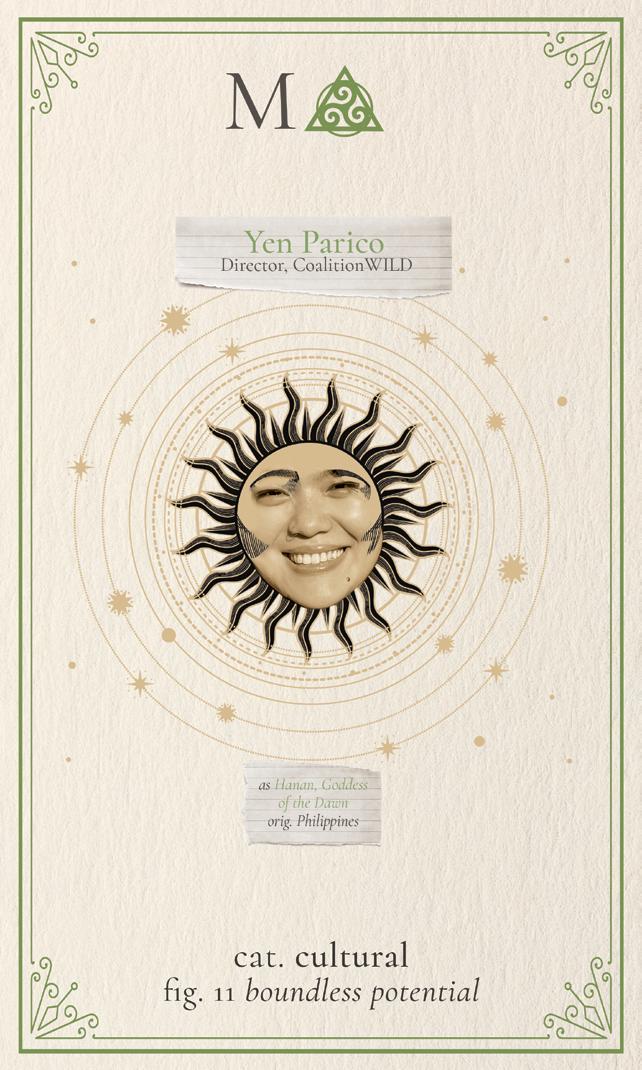
The Tagalog people of the Philippines revere Hanan, goddess of the dawn. She is invoked during births and important life transitions, especially when young people come of age.
Representing more than just an astronomical event, she has become a herald of promise and potential, as diligent in her responsibilities as the rising sun.

Recognizing our own boundless potential and encouraging it in others is a service we provide wild nature, energizing us with the self-confidence and determination required to surmount the looming challenges that our biosphere confronts.




In European mythology, the Green Man (or foliate face) is as ubiquitous as leaves in a forest. Carved on the cornerstones of stone cathedrals, sculpted and glued to the bark of ancient oaks, and splashed across the covers of a novel or two, it comes as no surprise that the green man has become the icon of several pagan deities, including that of the god Pan.
Pan represents many things that transcend material and immaterial reality. He is identified with forests and the wilder places, shepherds and flocks, and a voracious and passionate enthusiasm for life. When lost to his own fervor, he can become a destructive force, but more often than not, his fervor is the fuel of his great achievements, a frenzy that produces miracles. What would be possible with a more fervent and enthusiastic conservation movement?


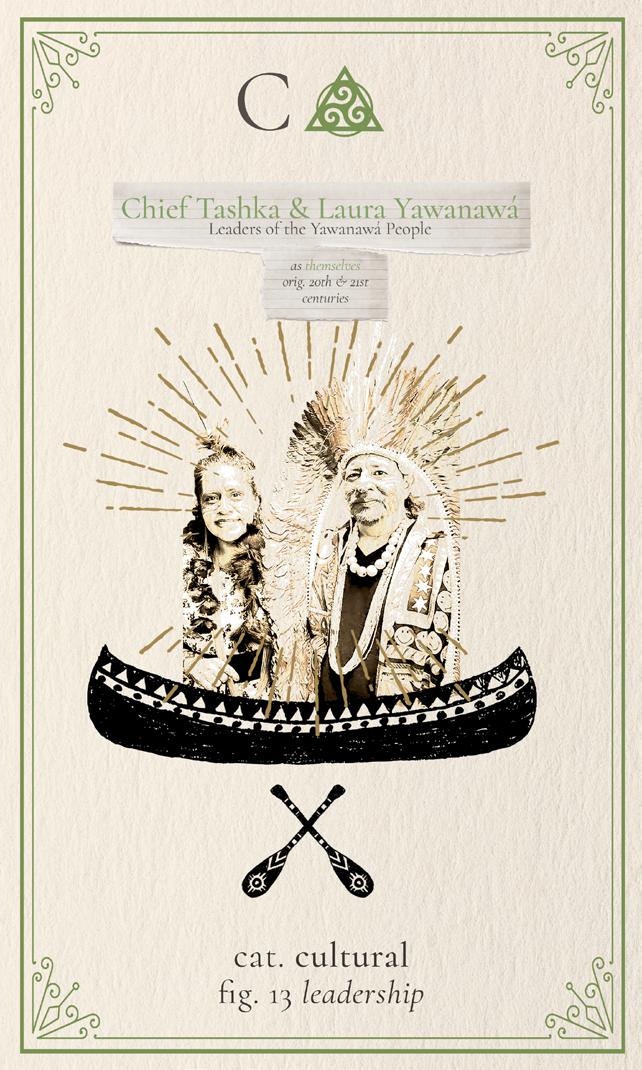

A century ago, the Yawanawá People of the Western Amazon were newly released from slavery to the rubber industry. Their forests in ruins and their traditional lifeways in disuse, they struggled to find their place in the world once again.
Chief Tashka and his wife, Laura, have worked tirelessly to restore Yawanawá culture to the people of the Western Amazon.
As the people have grown in confidence and dedication to traditional practices, the forest has flourished, a clear demonstration of the interrelationship between biodiversity and culture.


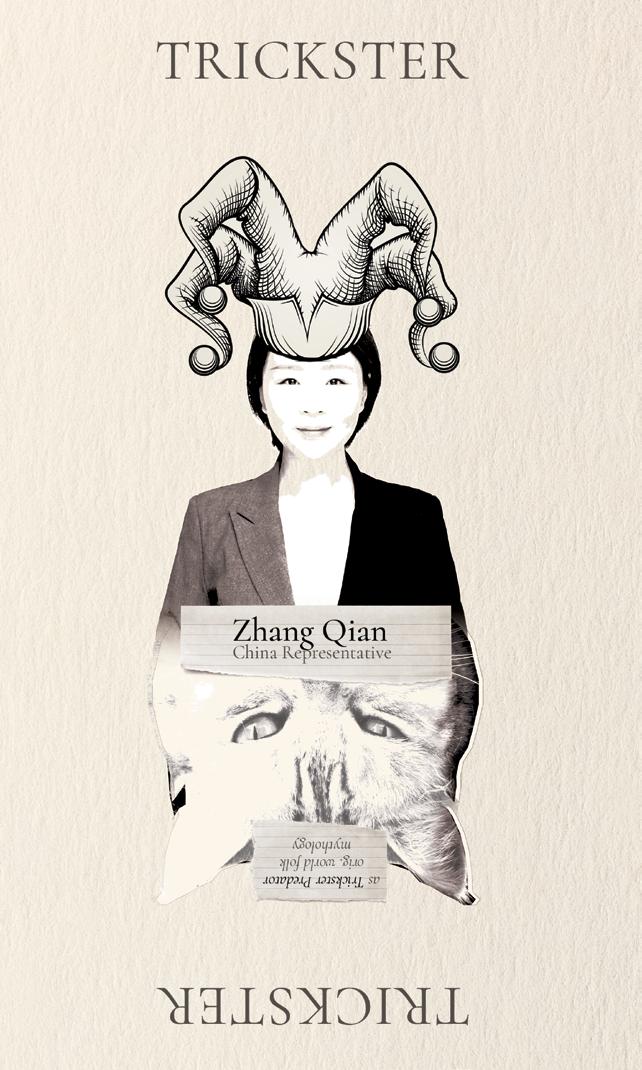

In many traditional cultures around the world, the trickster appears in two facets but always with the same purpose: to teach lessons in cunning and wits. When manifested as a predator, the trickster advises would-be prey to be cautious, be quick, take nothing at face value.
As prey, the trickster awards victory to only the most courageous and clever predators. Trickster myths are just another way of relaying the role of wild nature in the development of some of the most admired and enviable attributes.

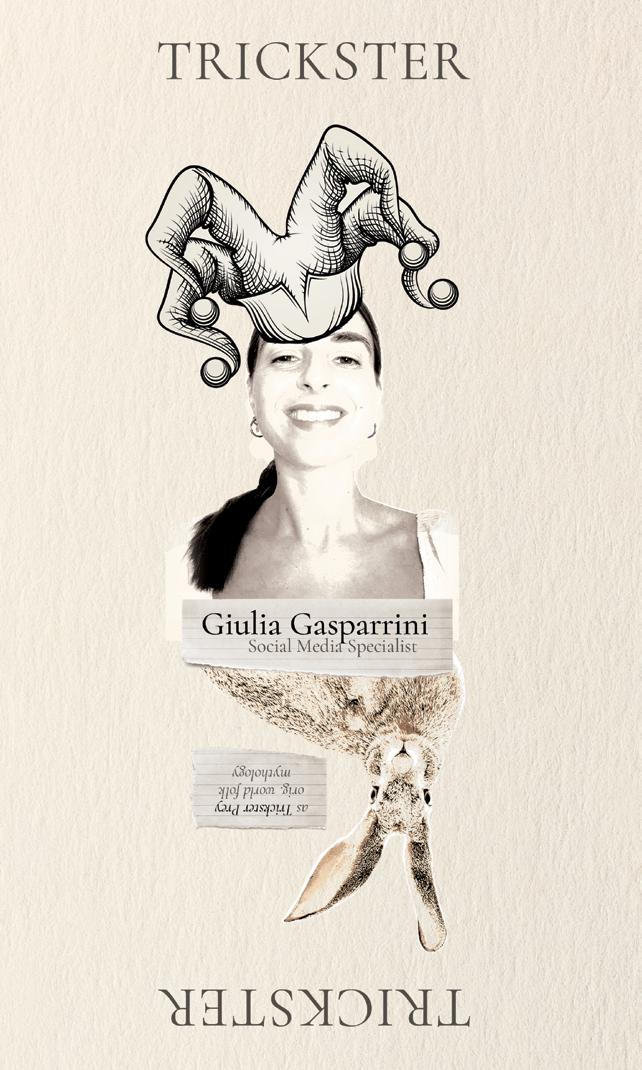
In many traditional cultures around the world, the trickster appears in two facets but always with the same purpose: to teach lessons in cunning and wits. When manifested as a predator, the trickster advises would-be prey to be cautious, be quick, take nothing at face value. As prey, the trickster awards victory to only the most courageous and clever predators. Trickster myths are just another way of relaying the role of wild nature in the development of some of the most admired and enviable attributes.

https://wild.org/infinite-wild/ 717 Poplar Avenue, Boulder CO

